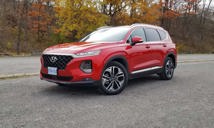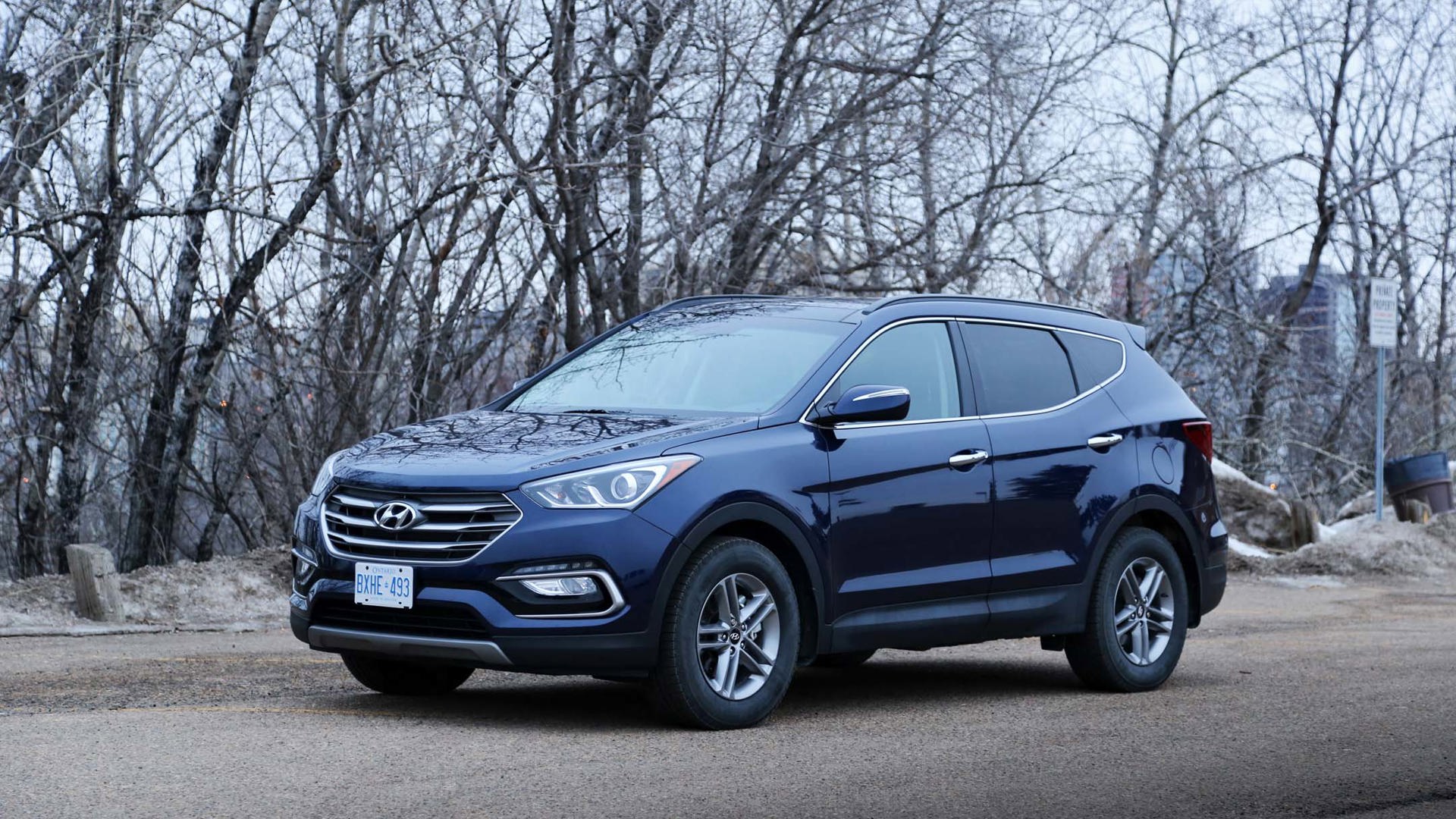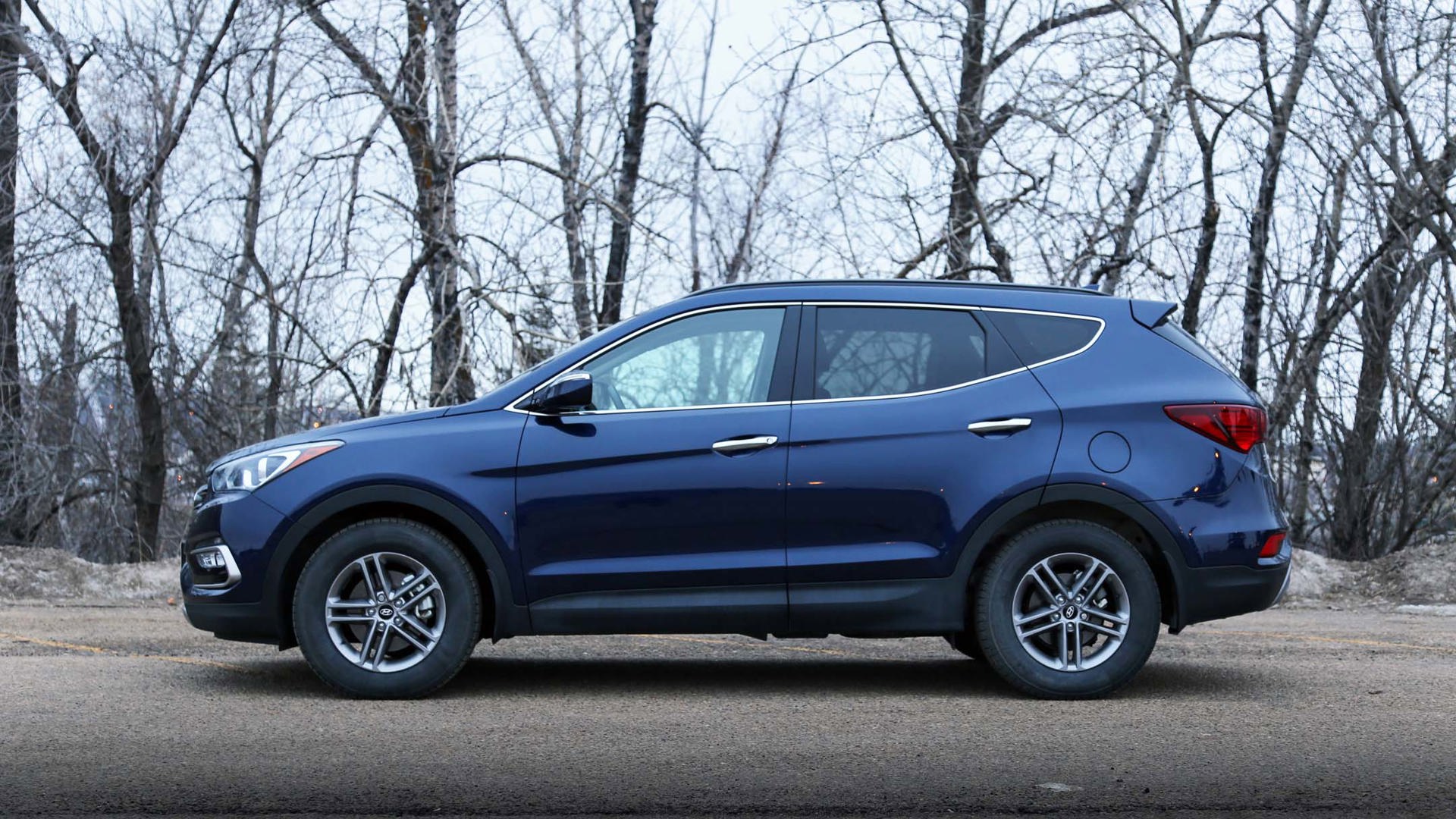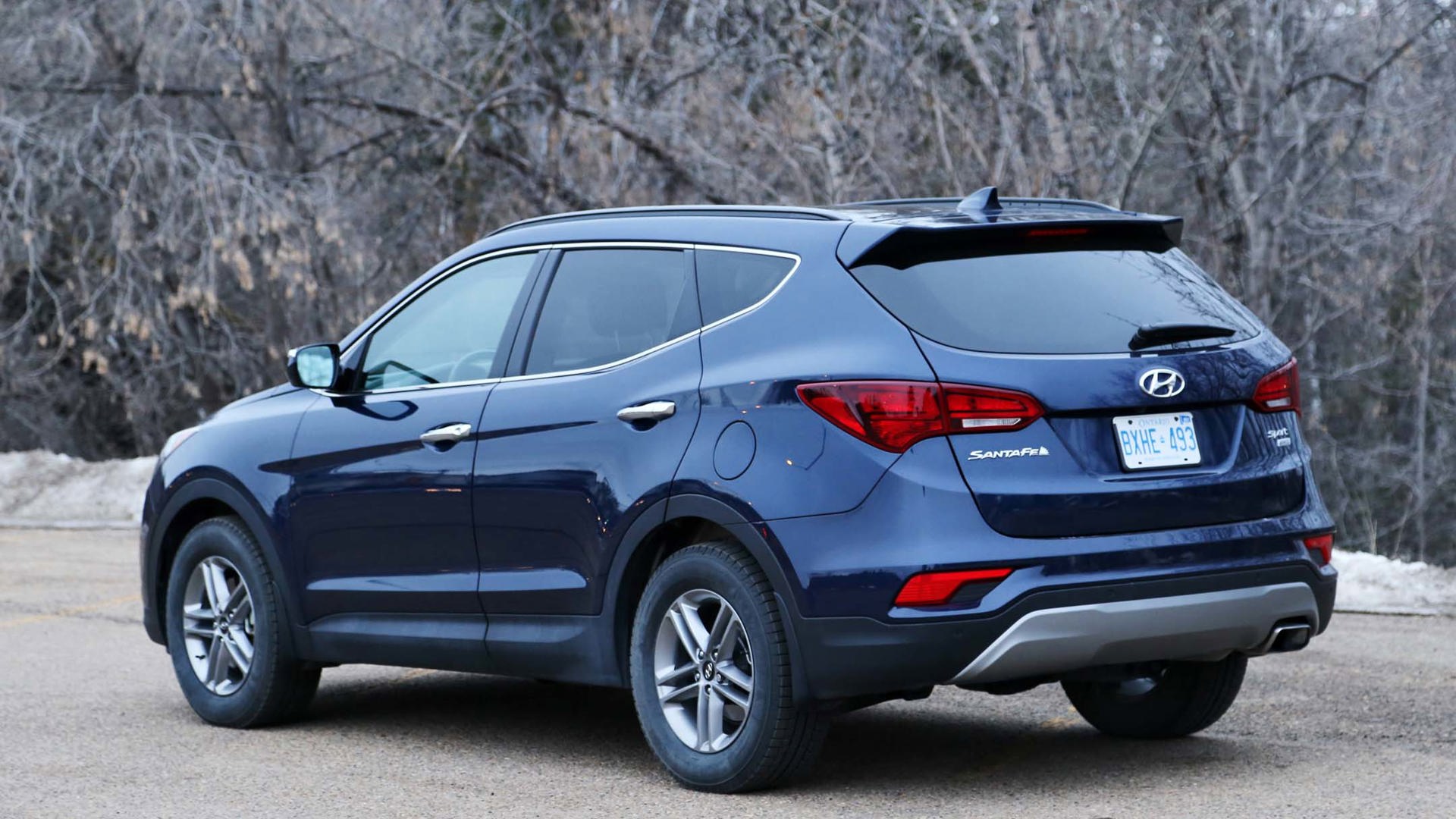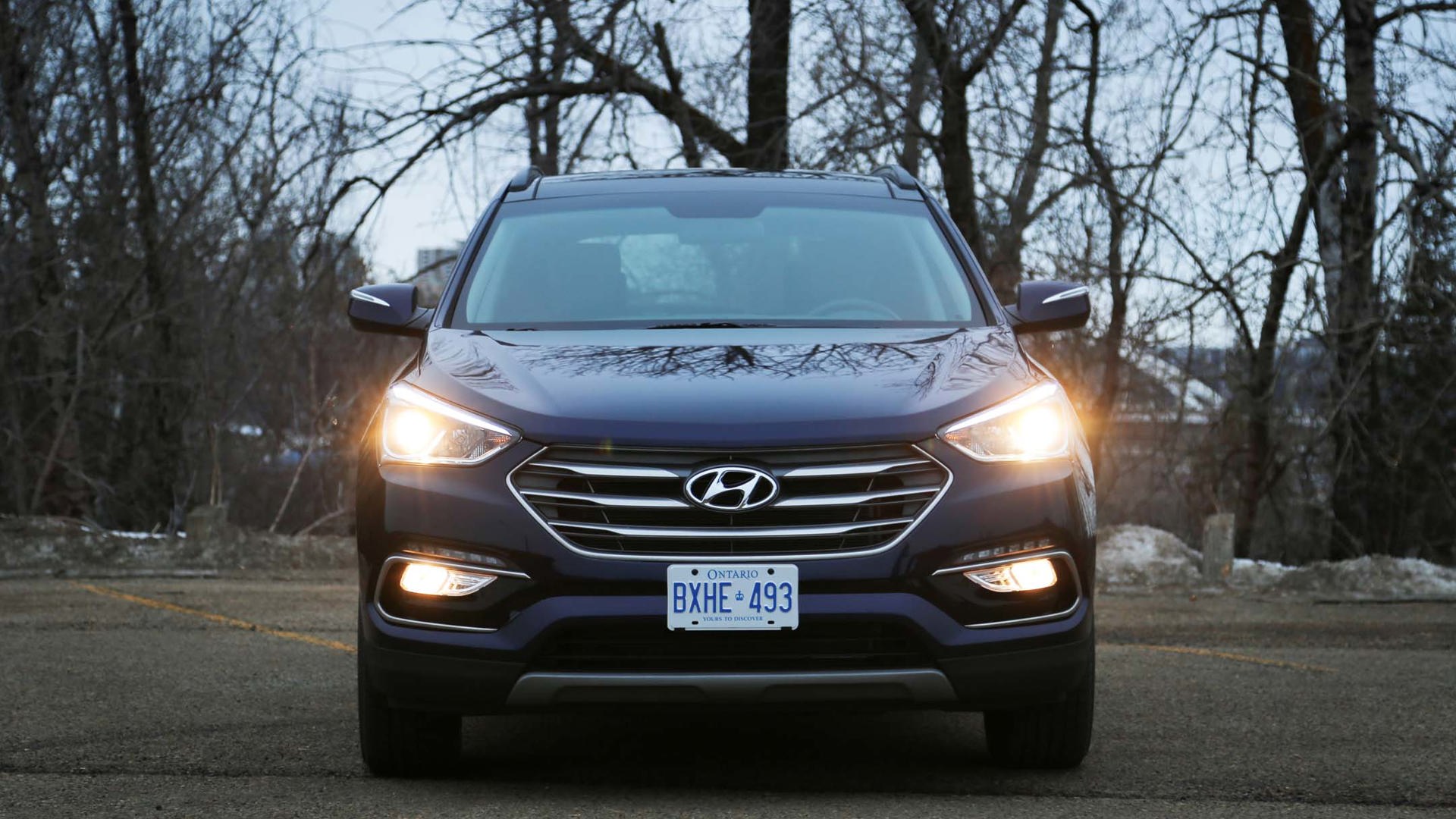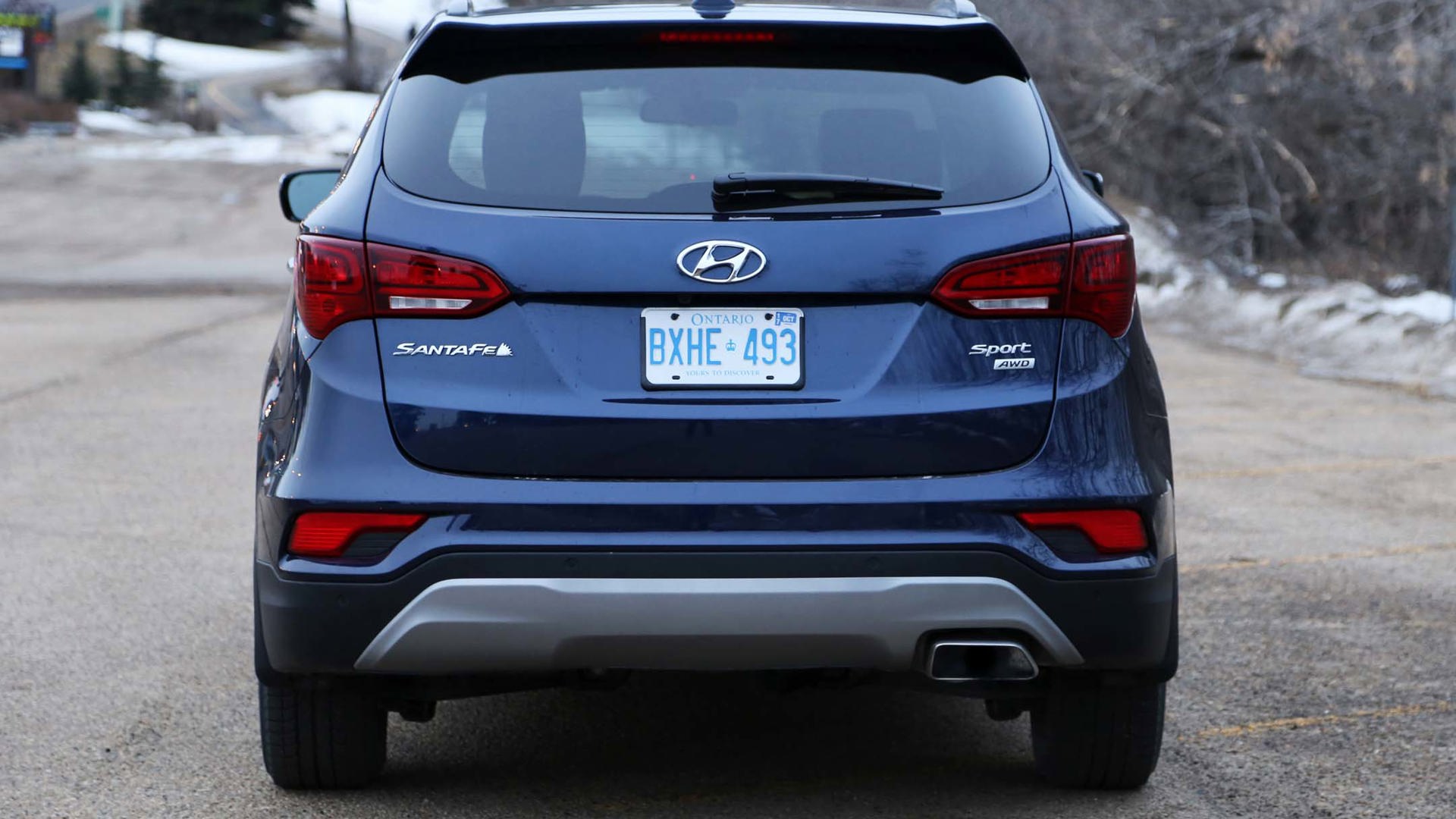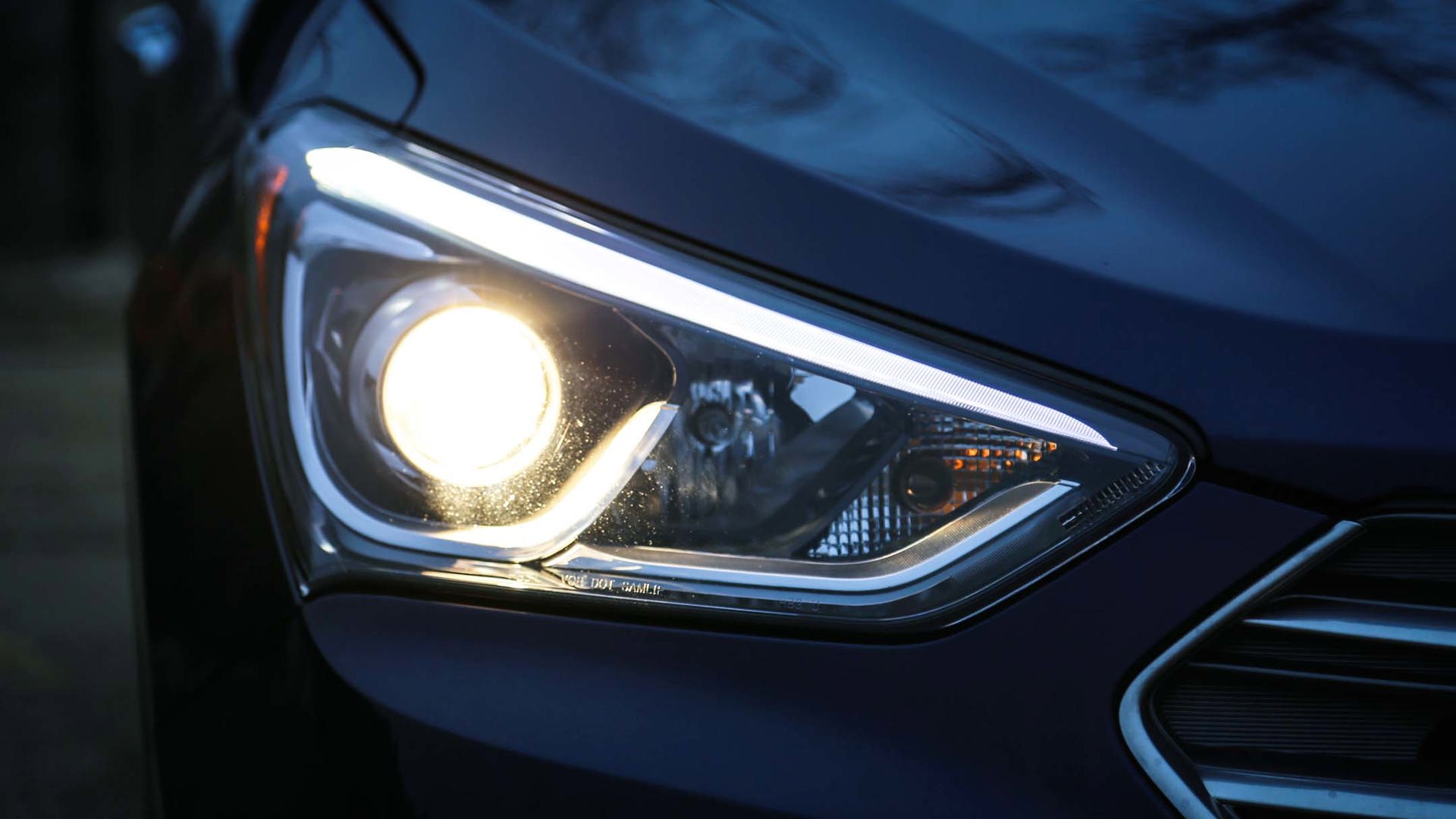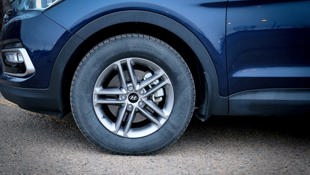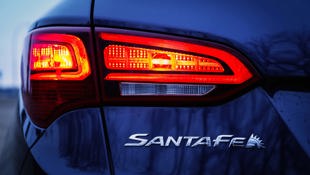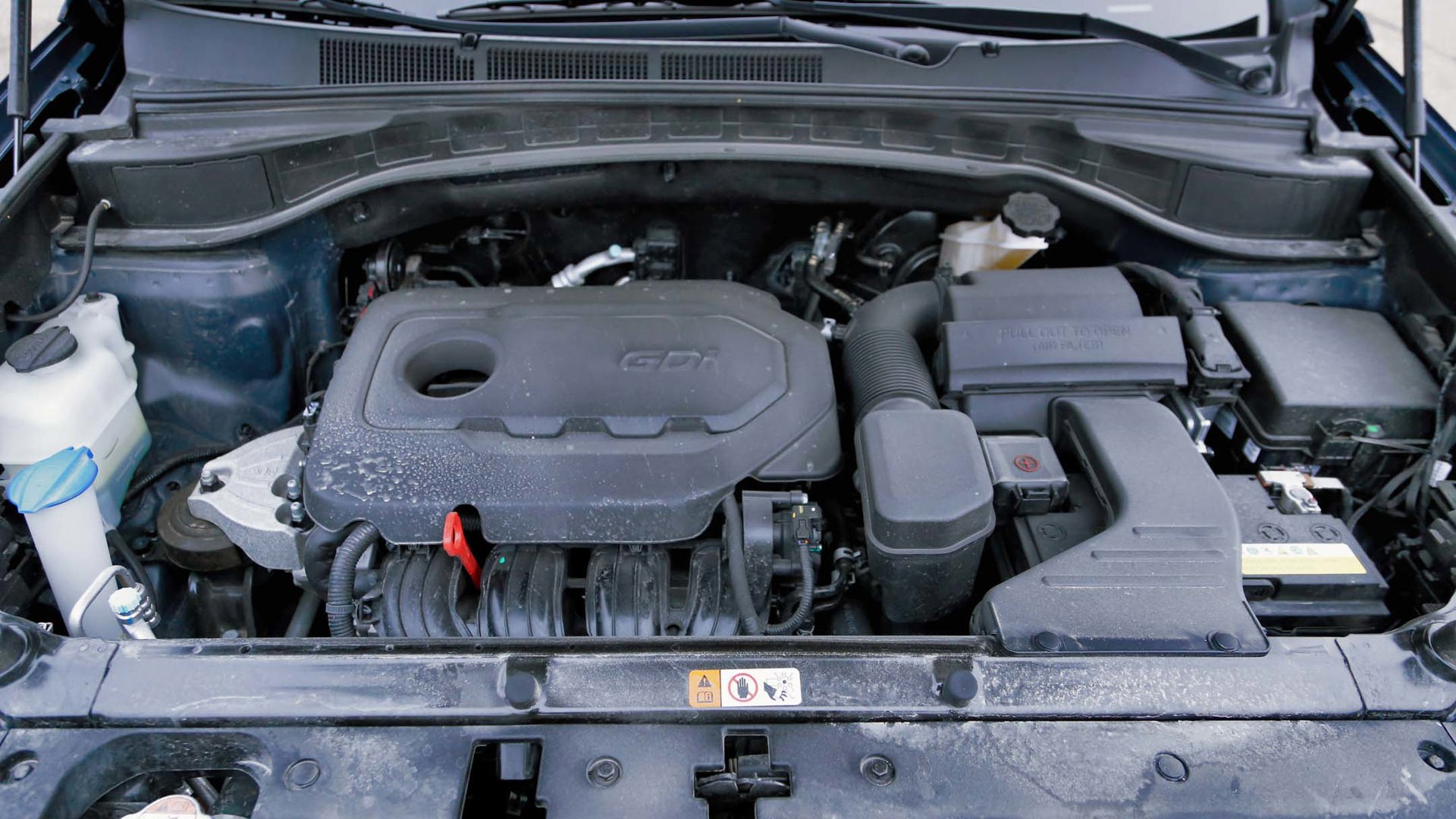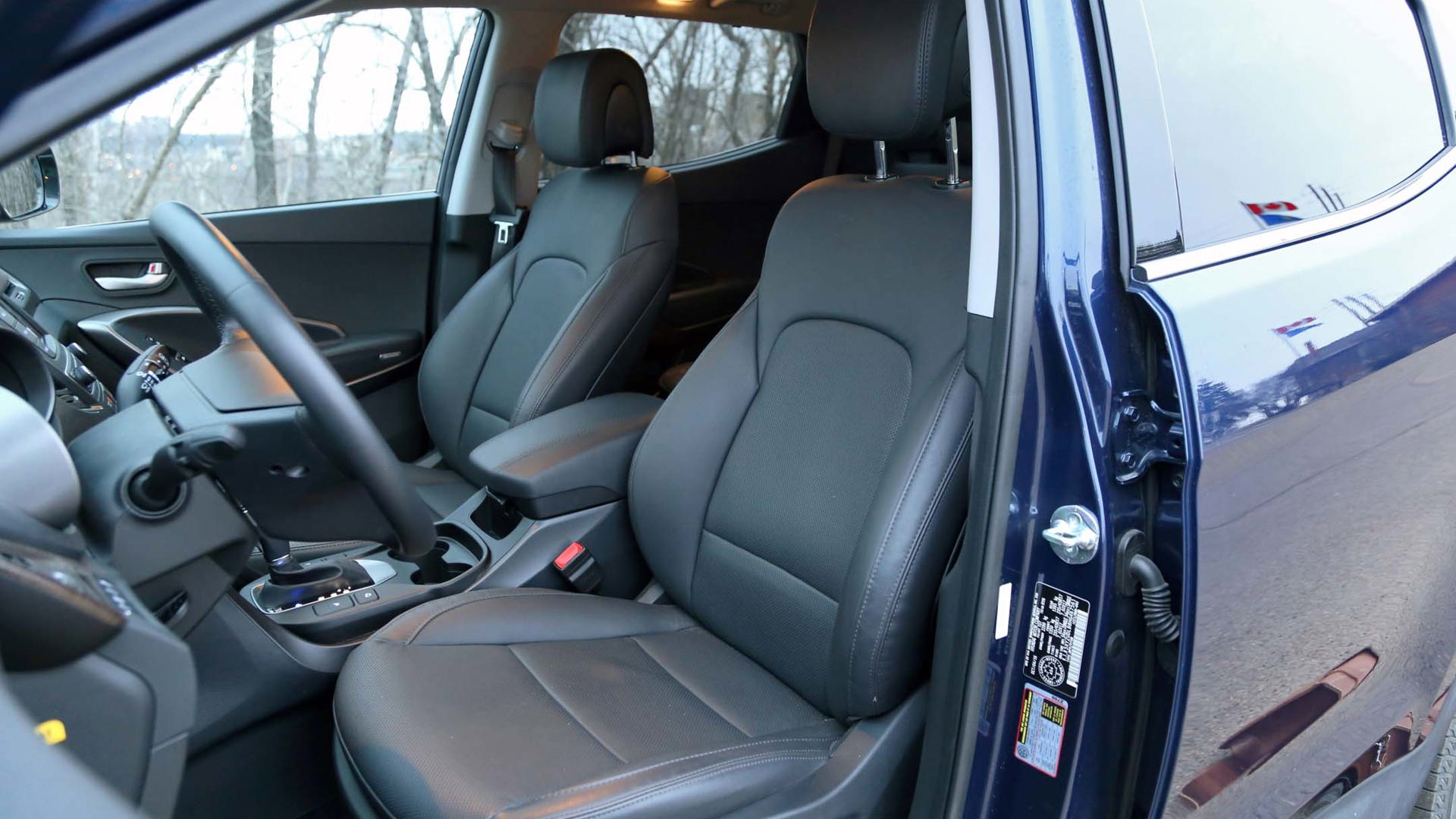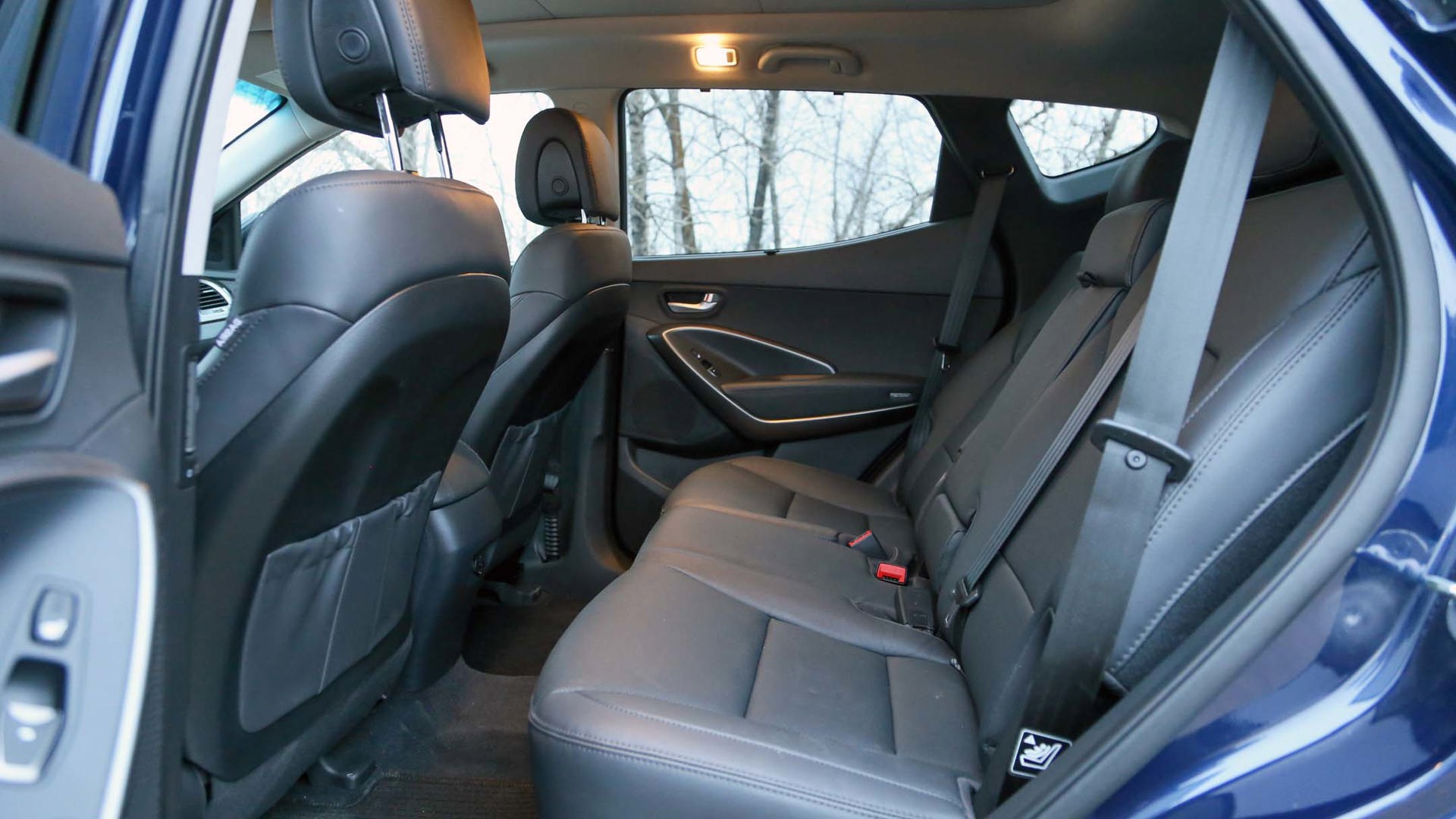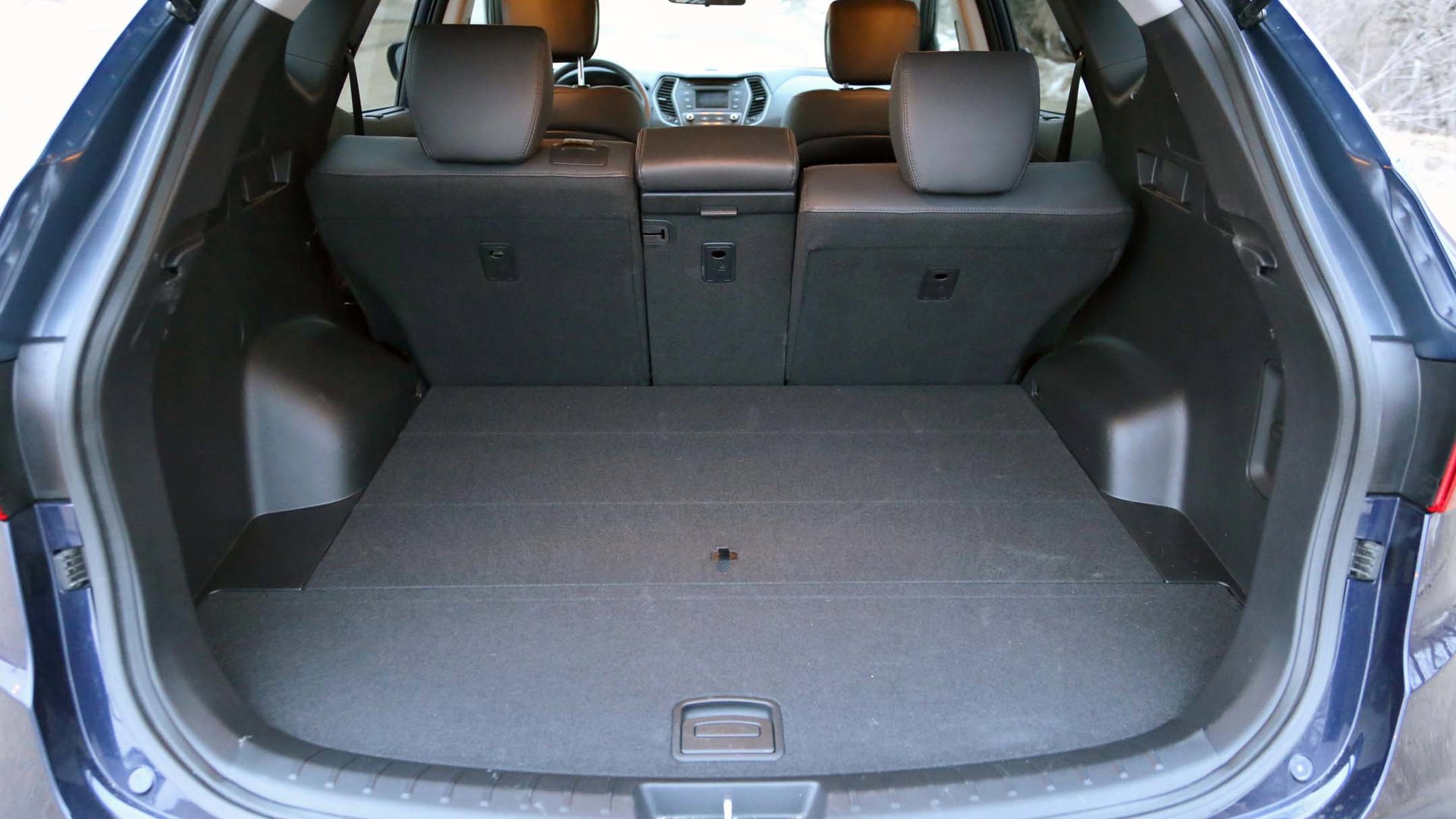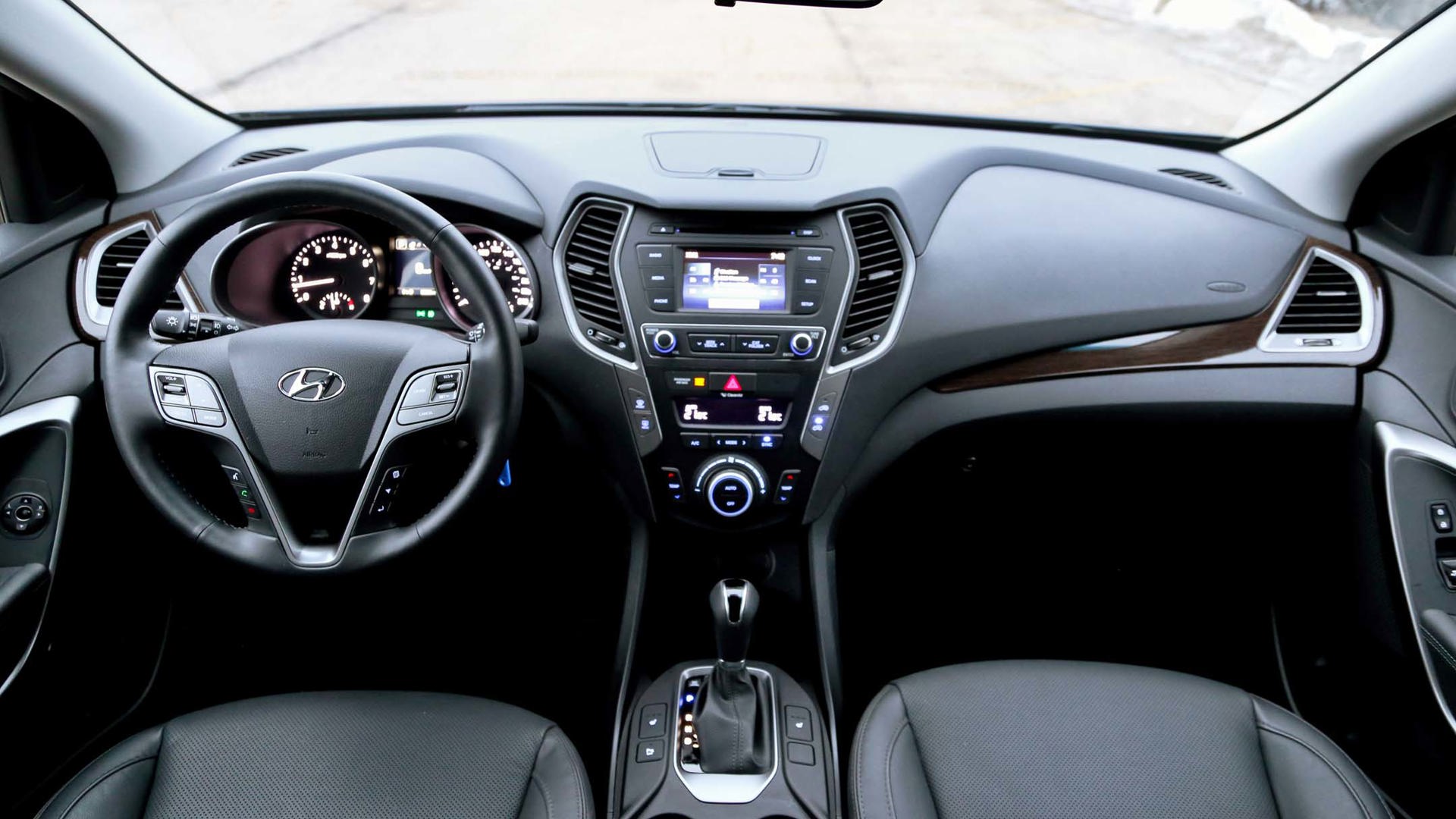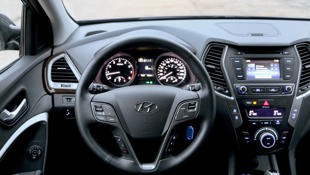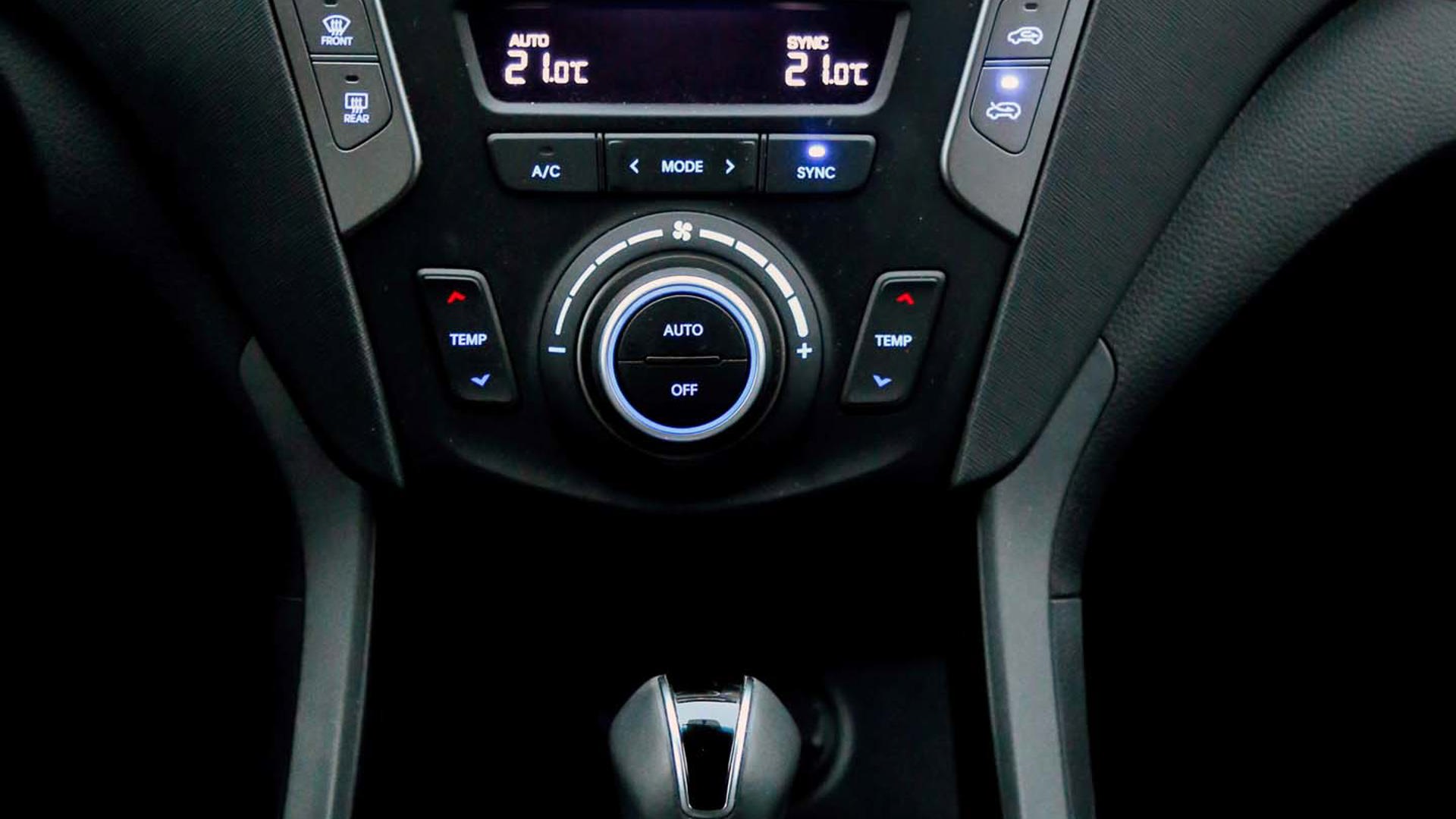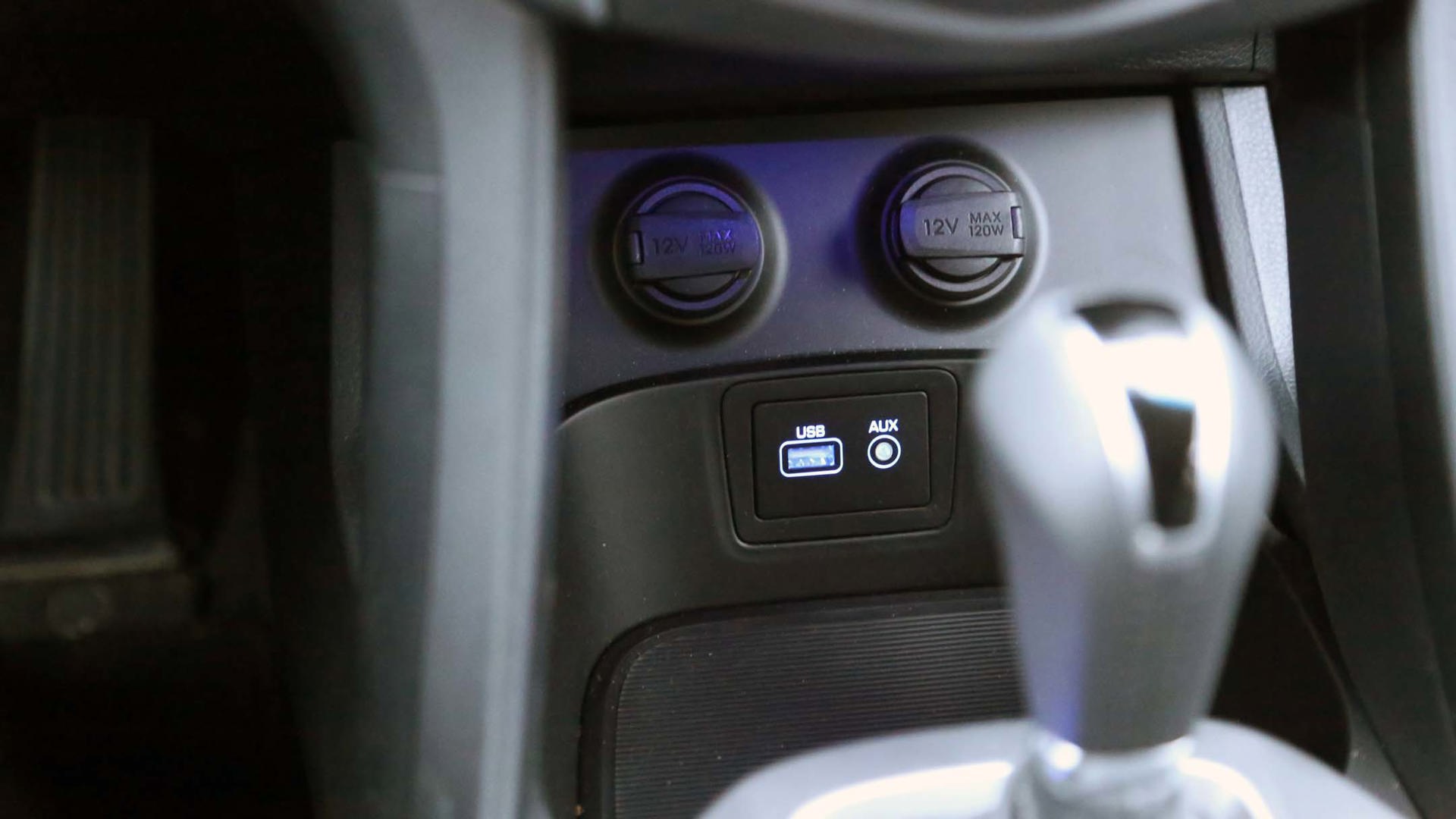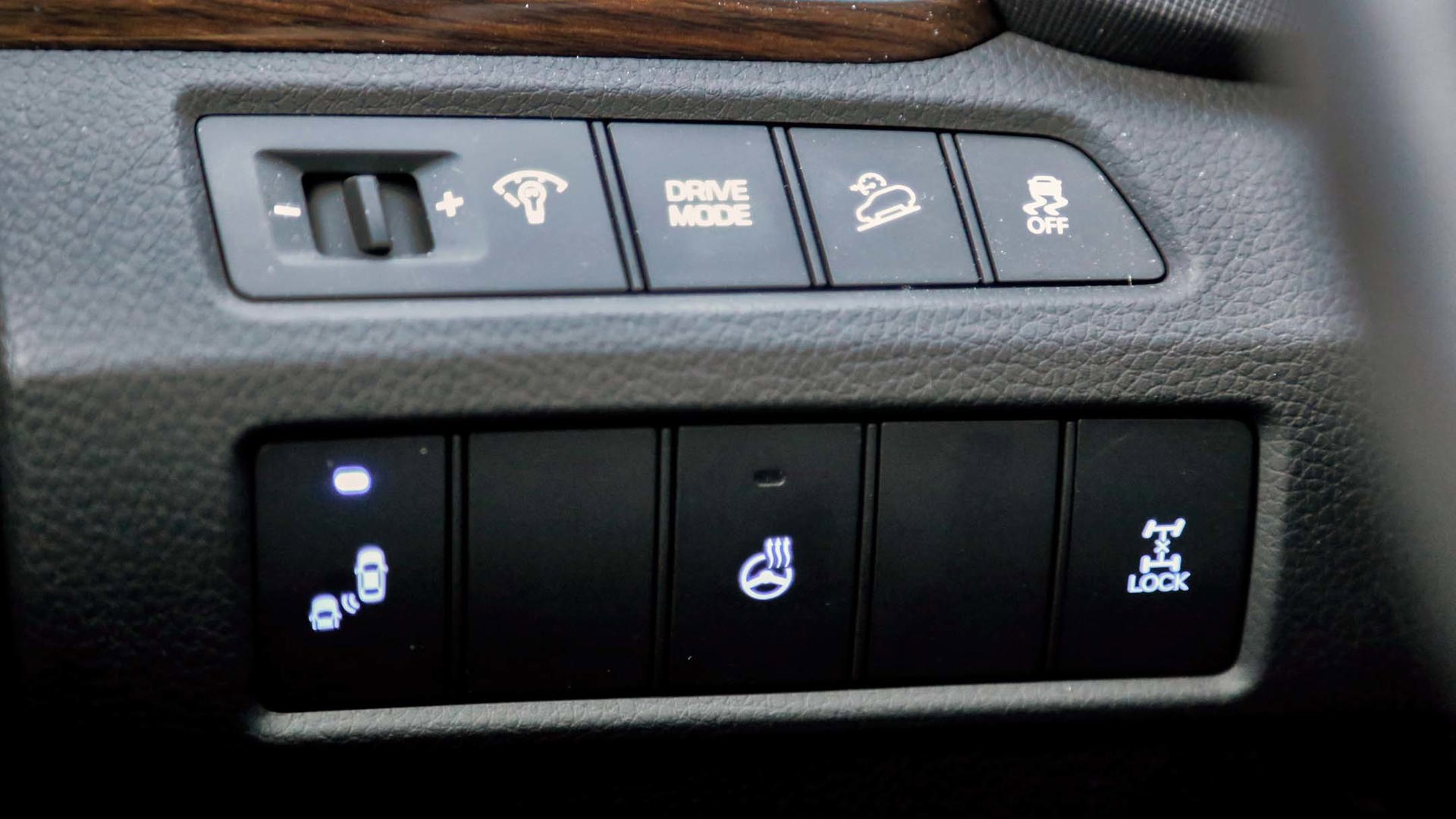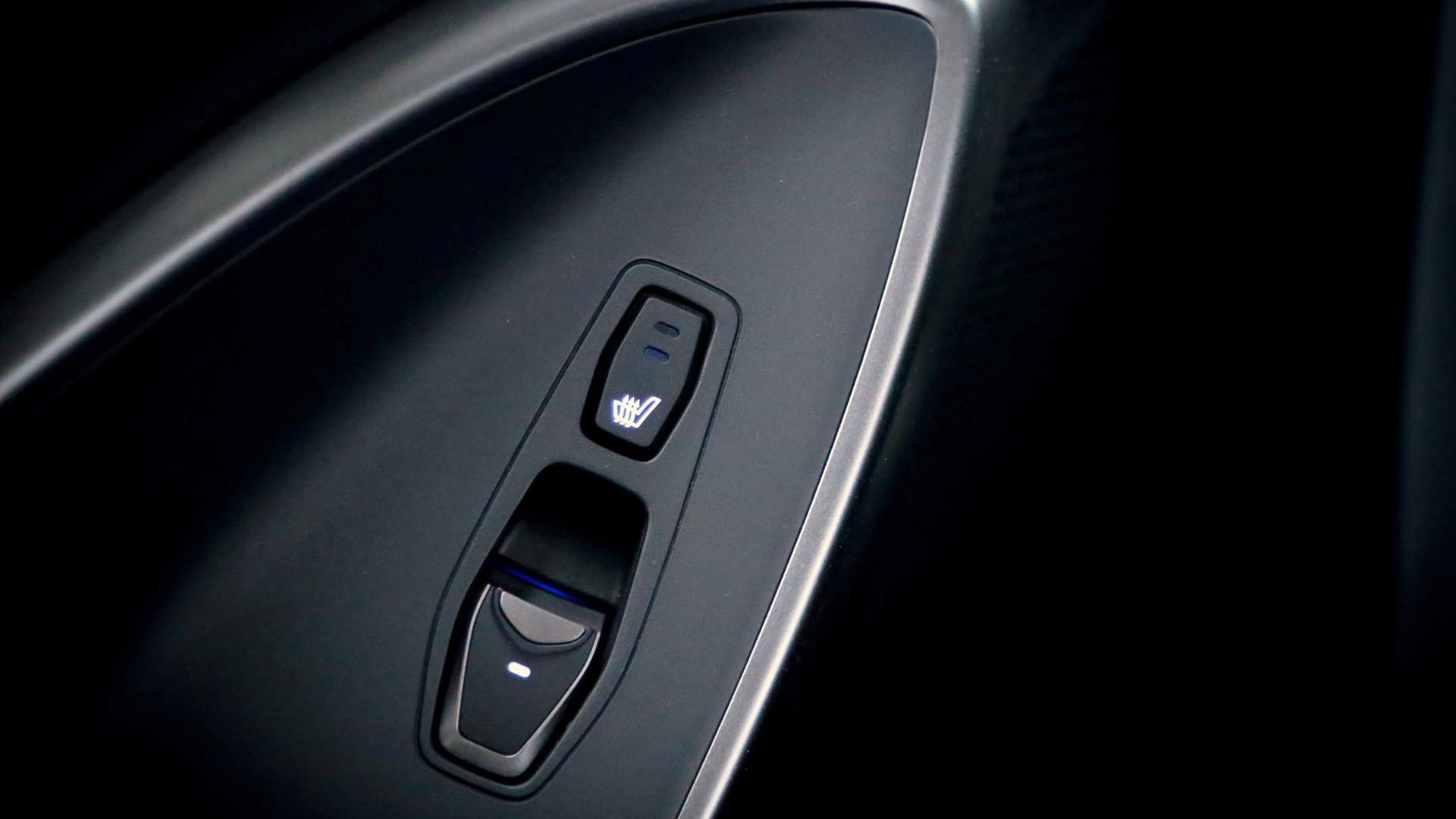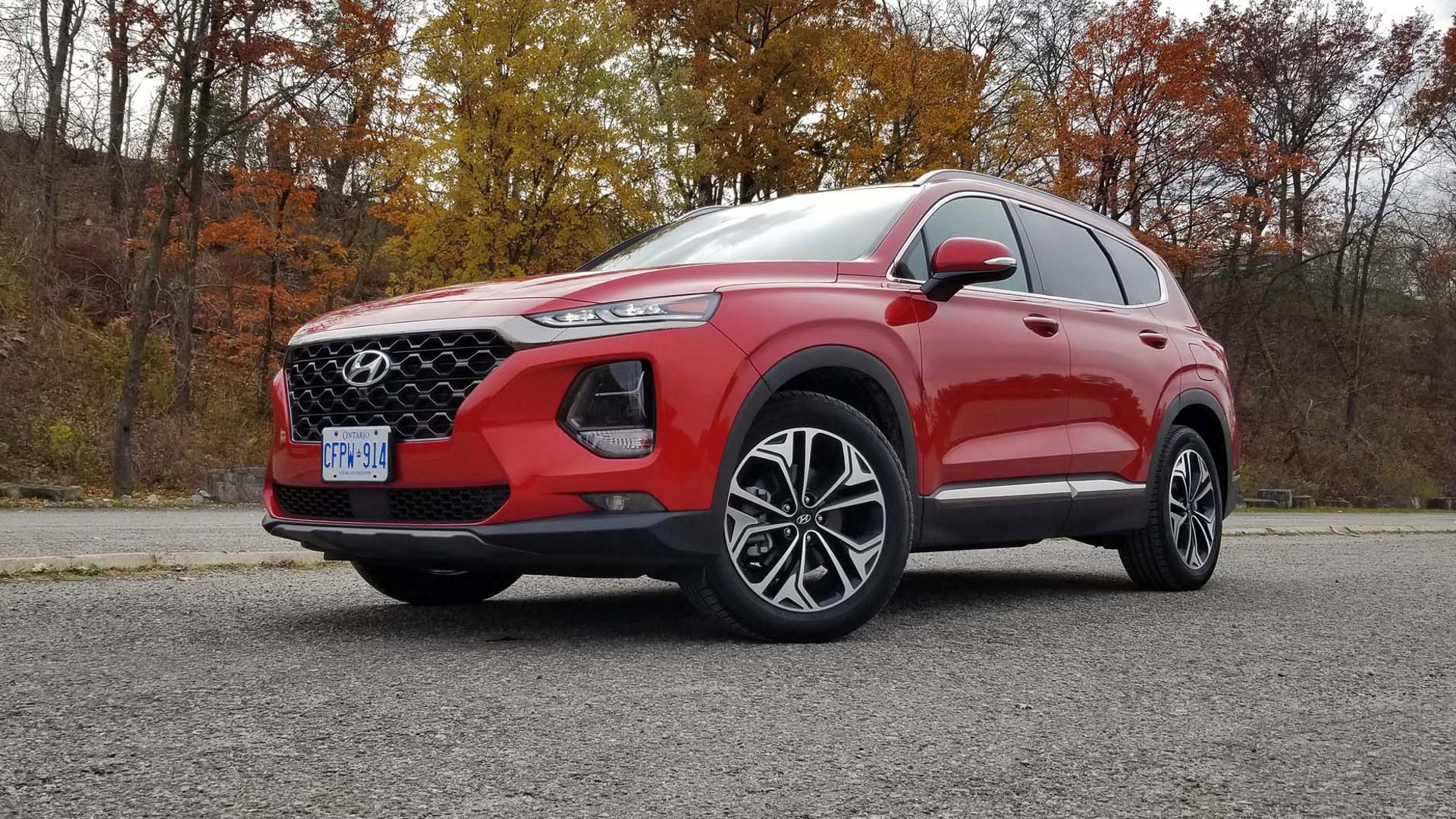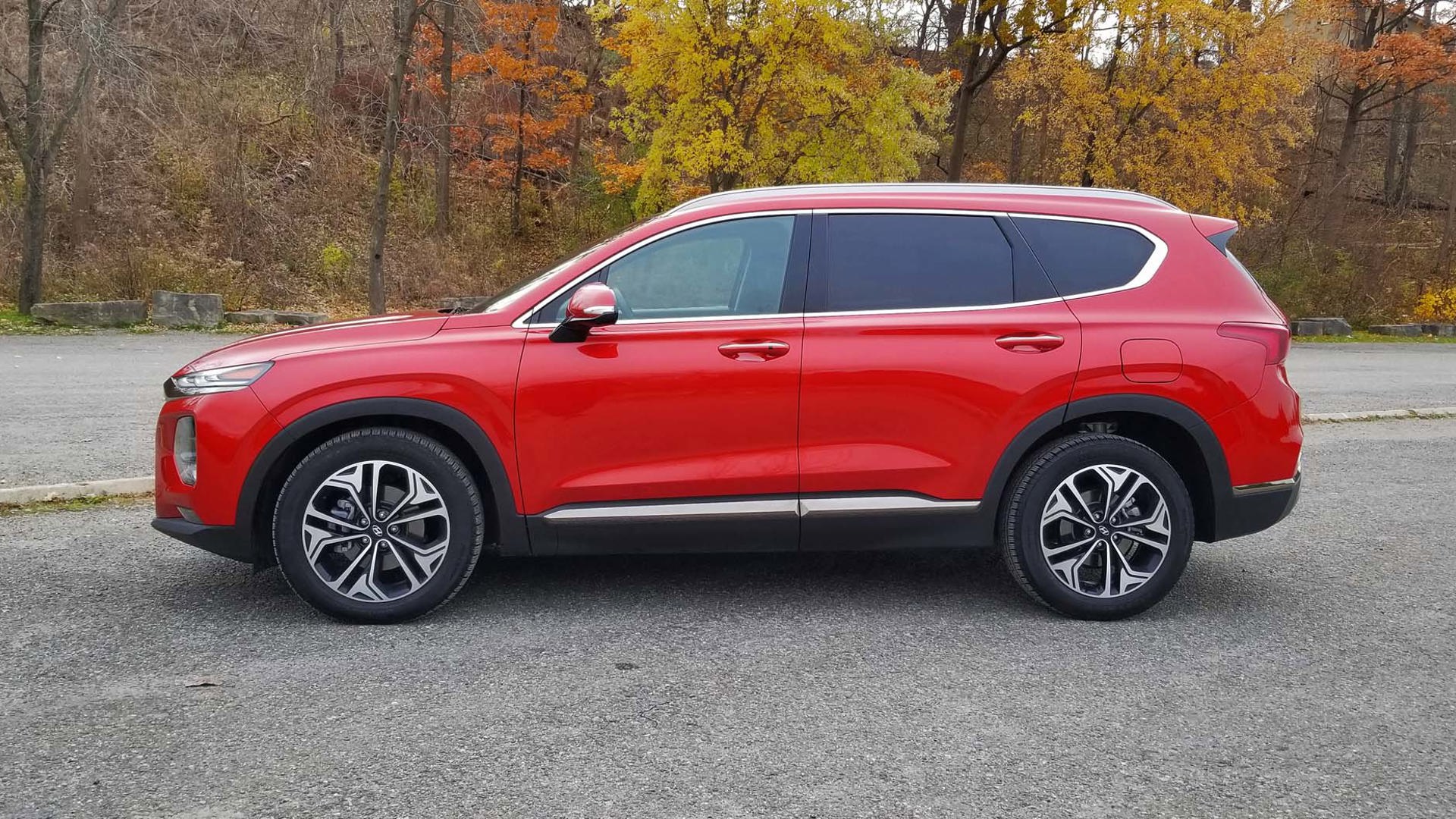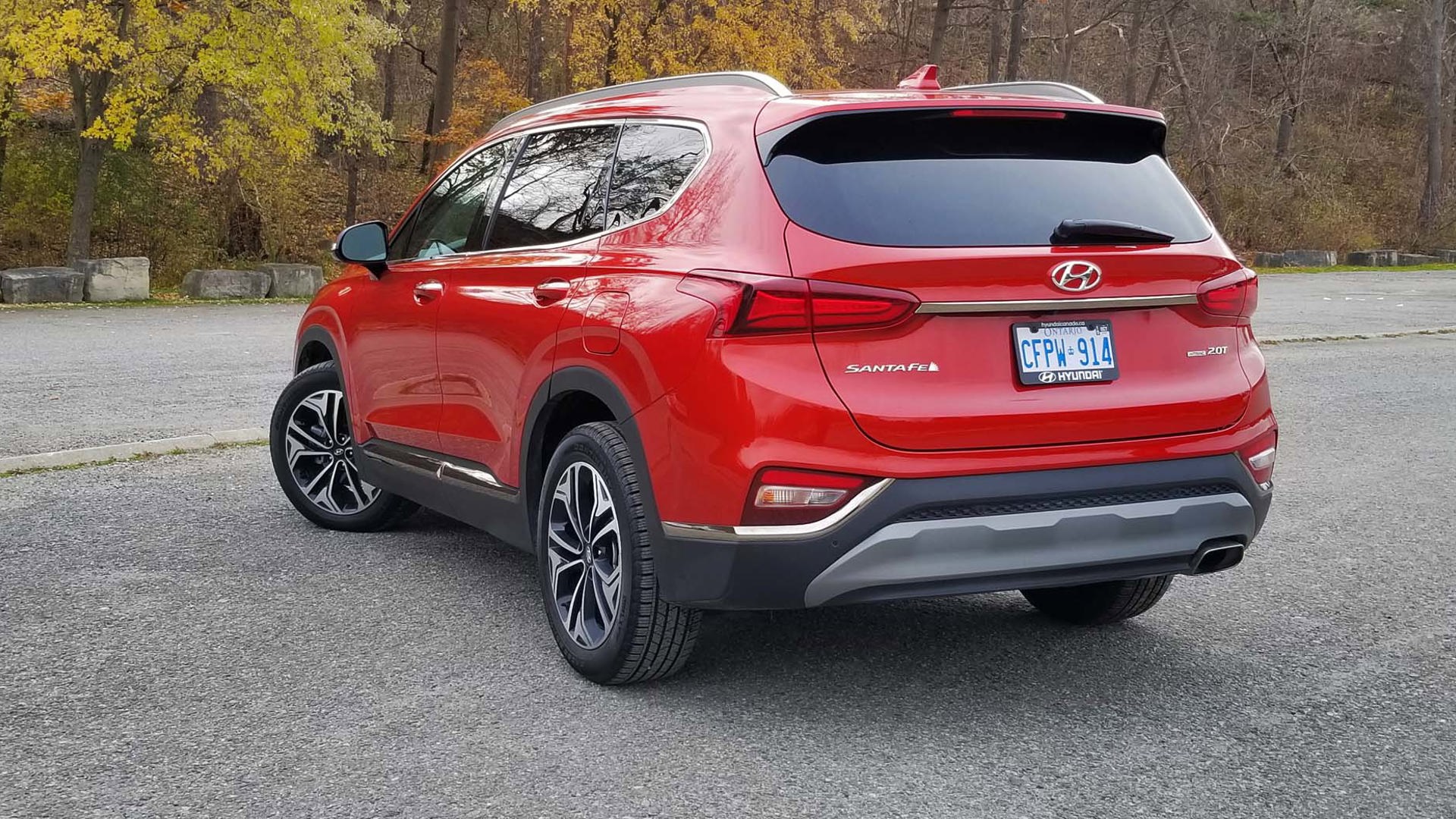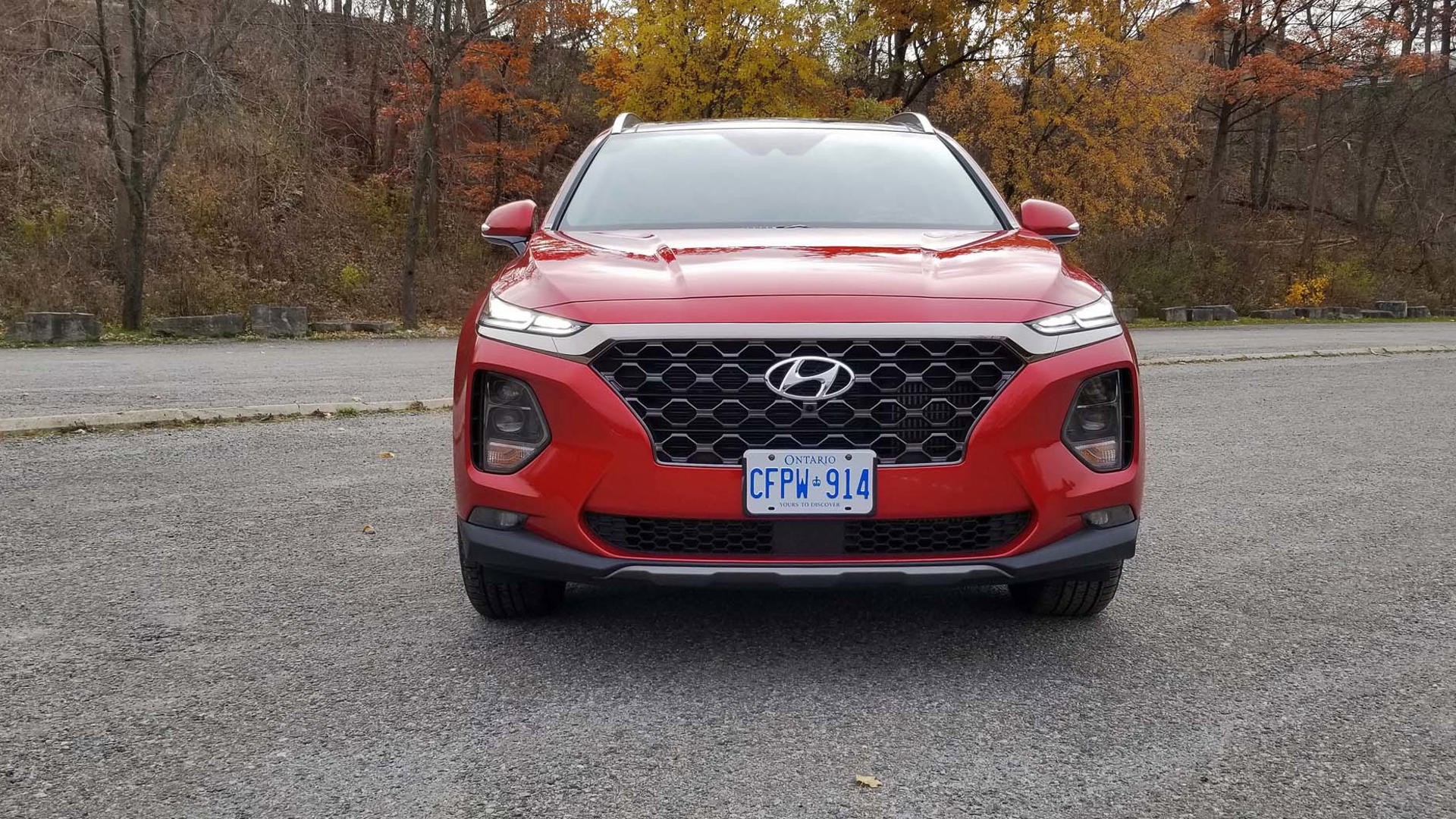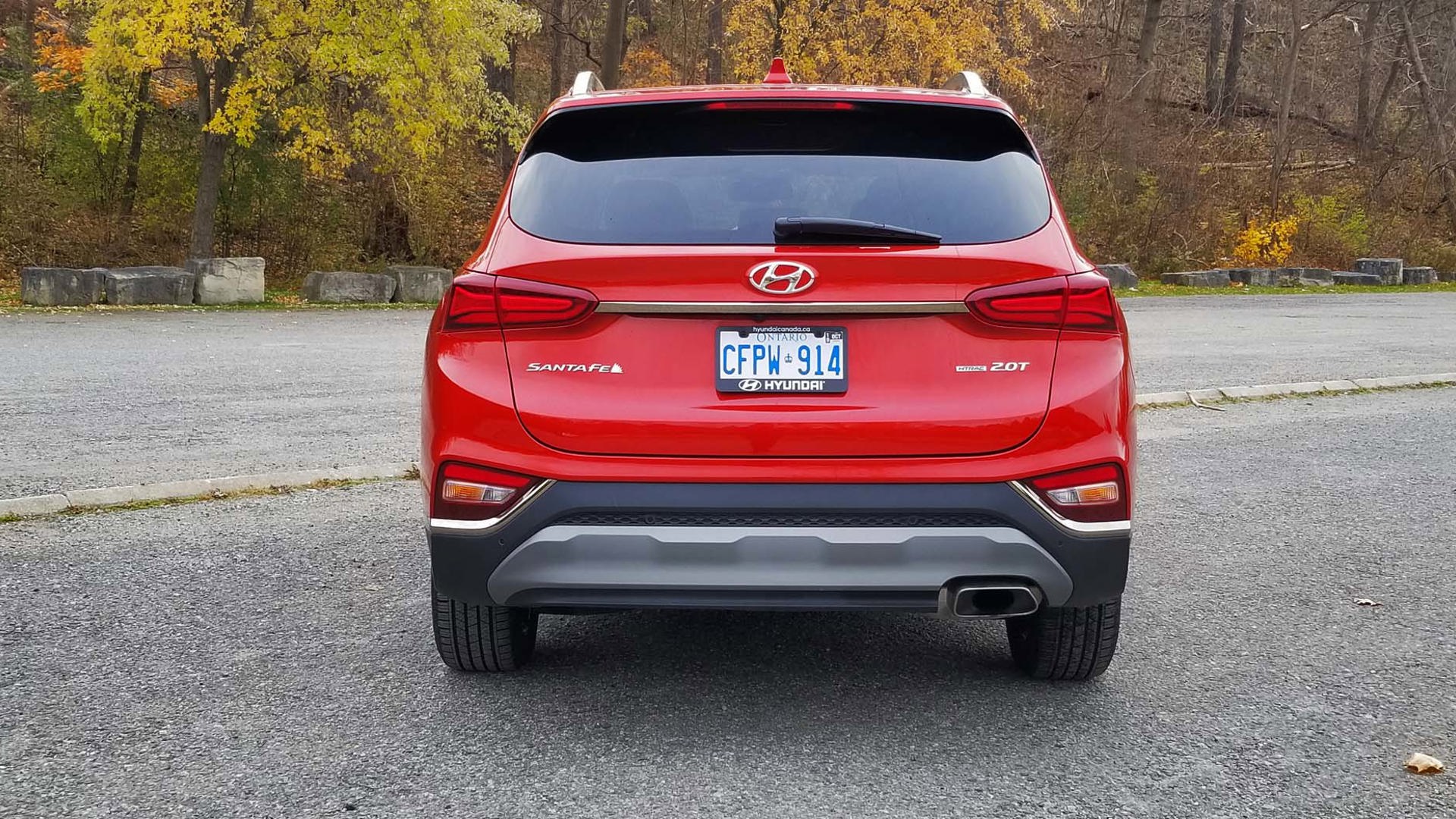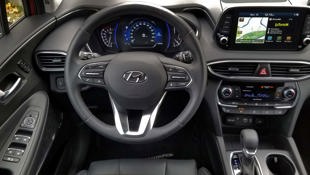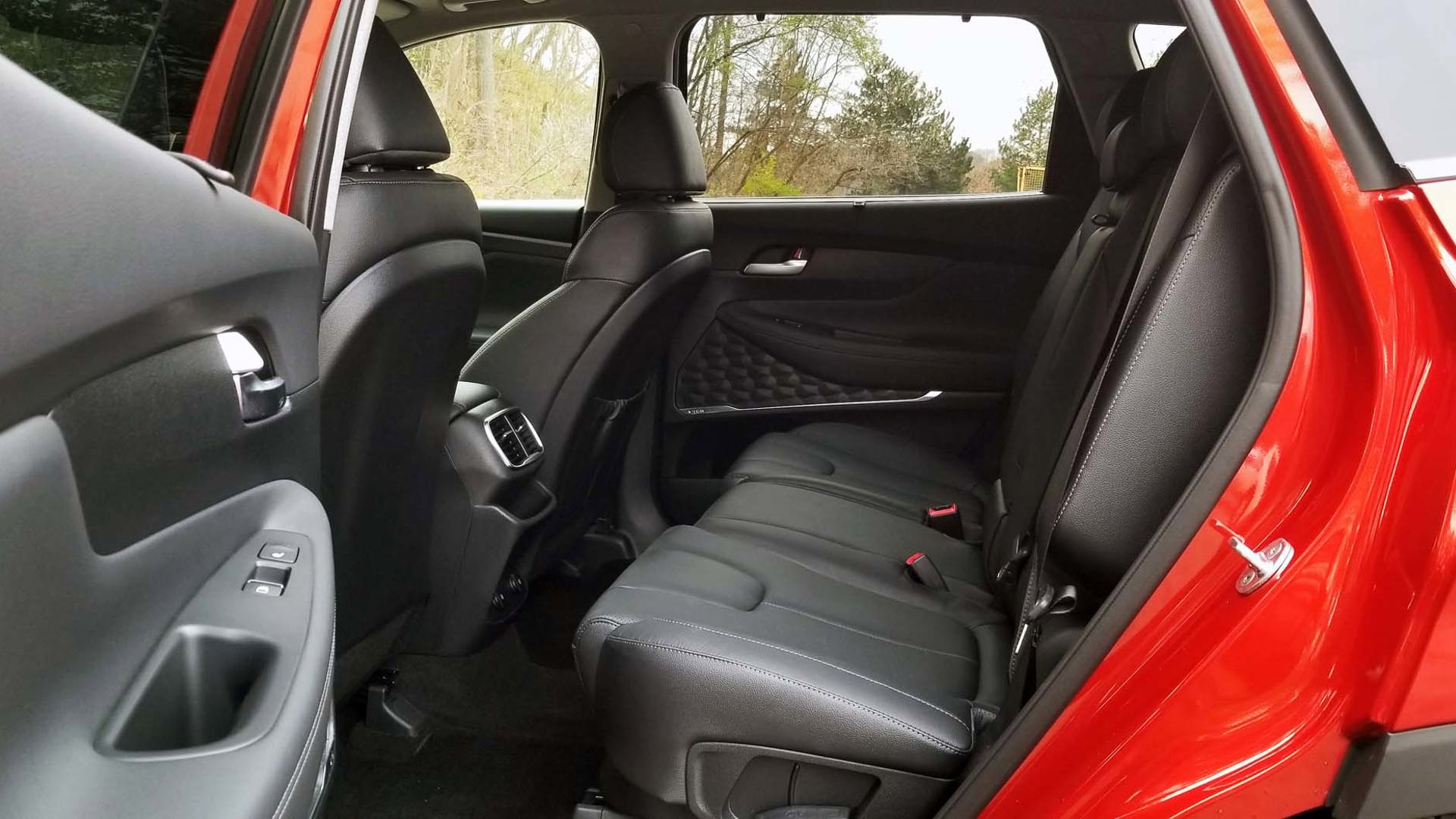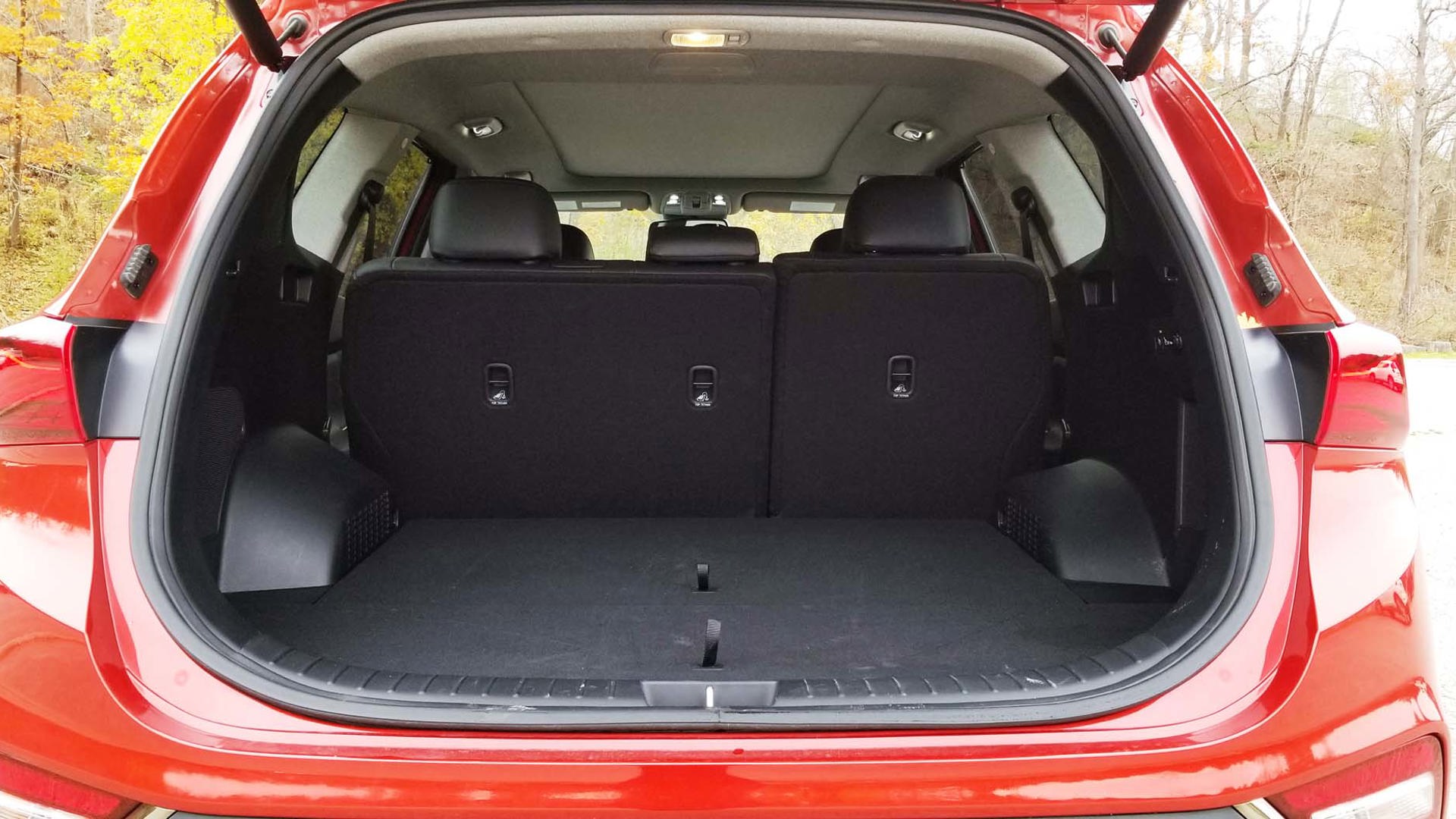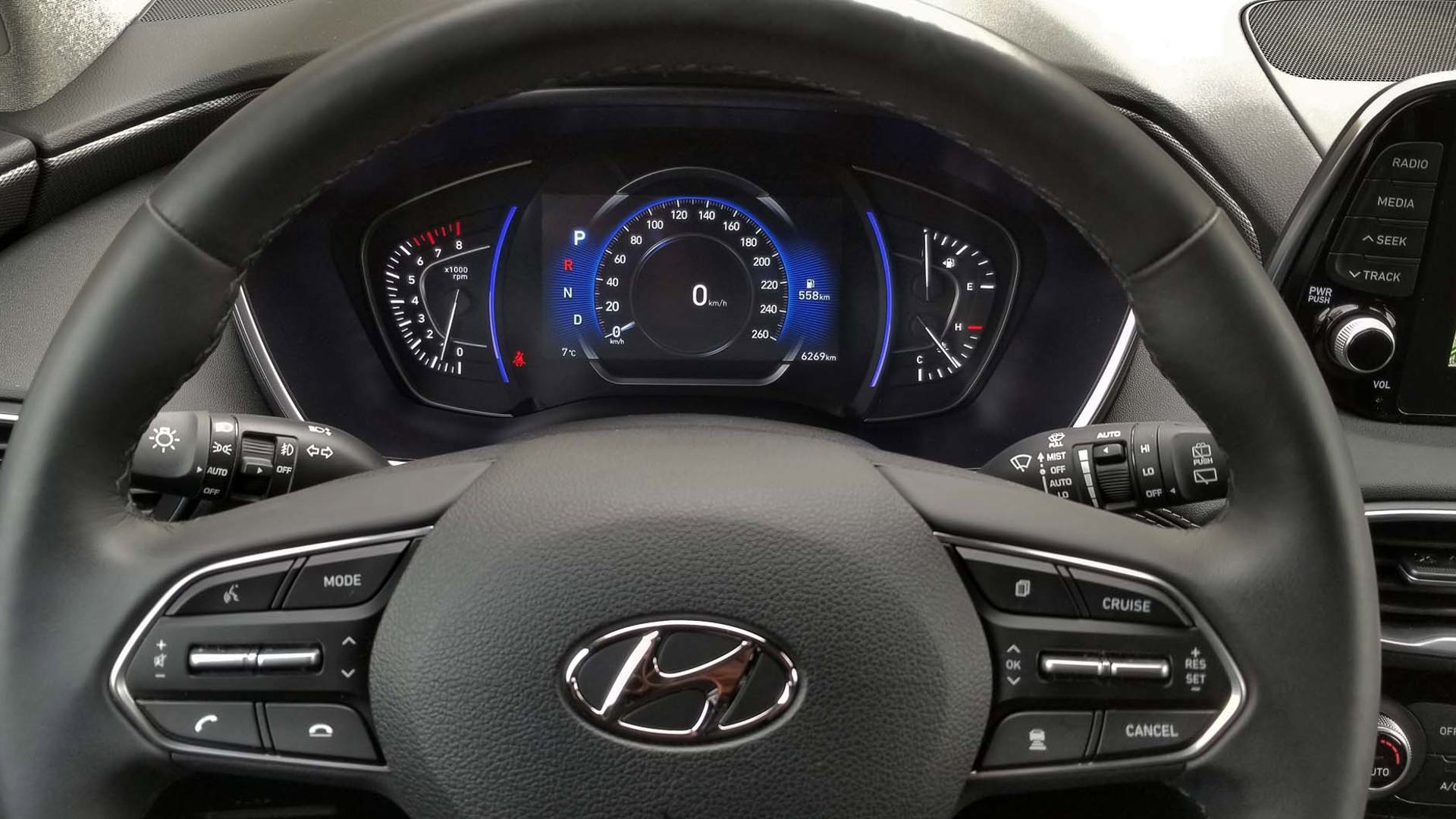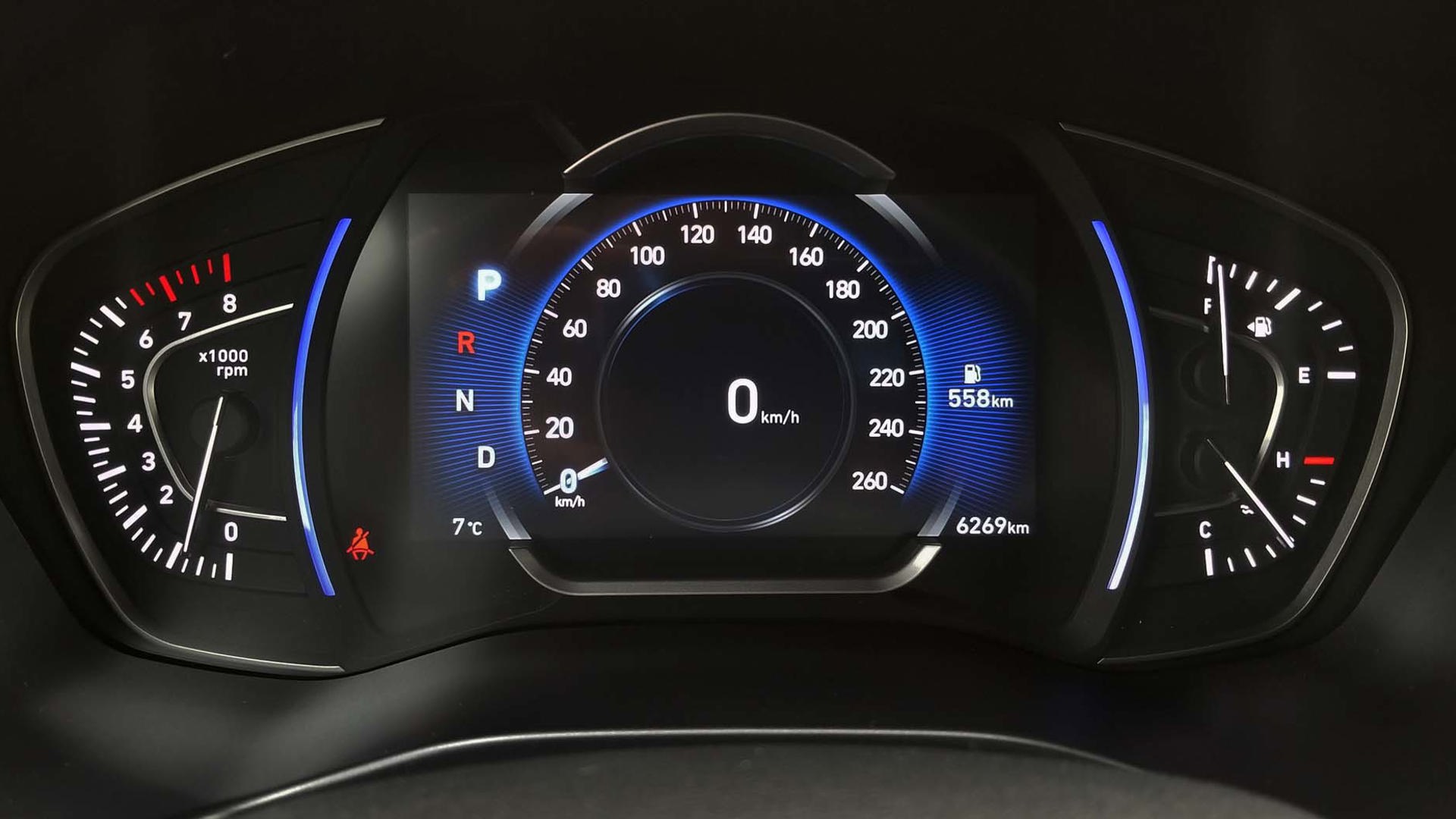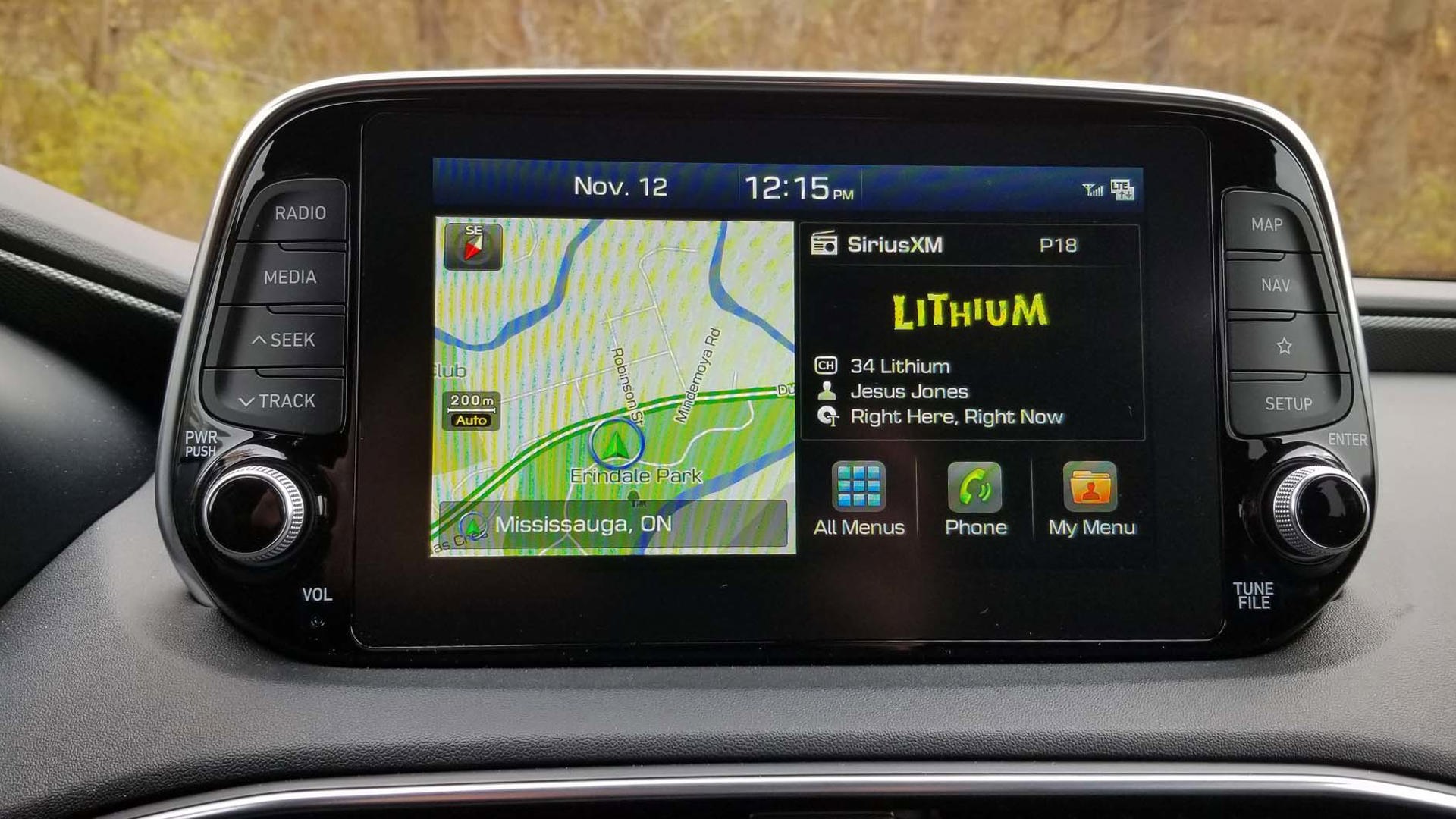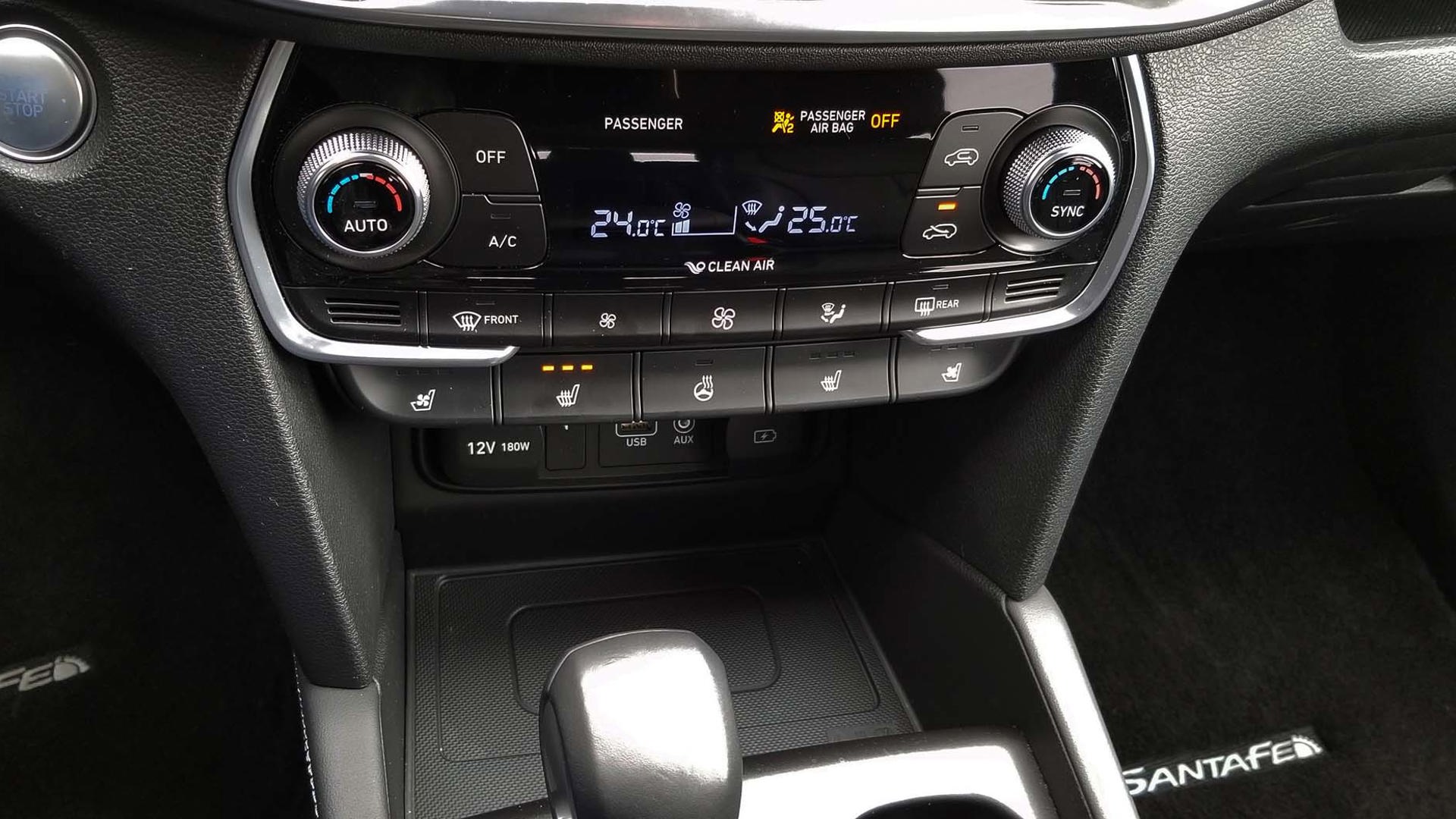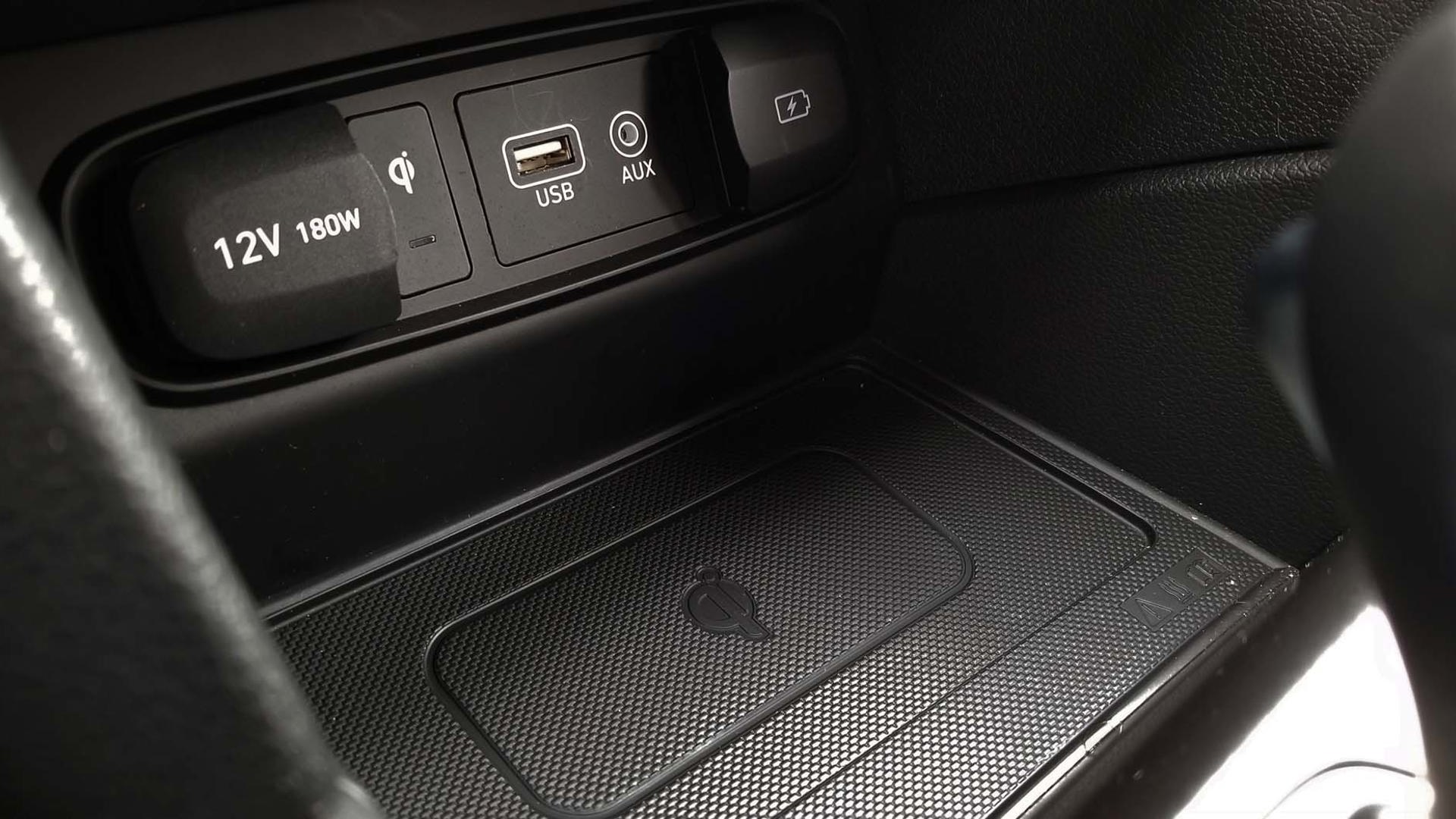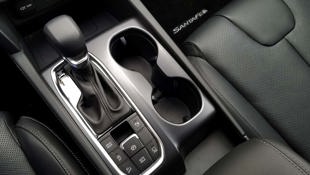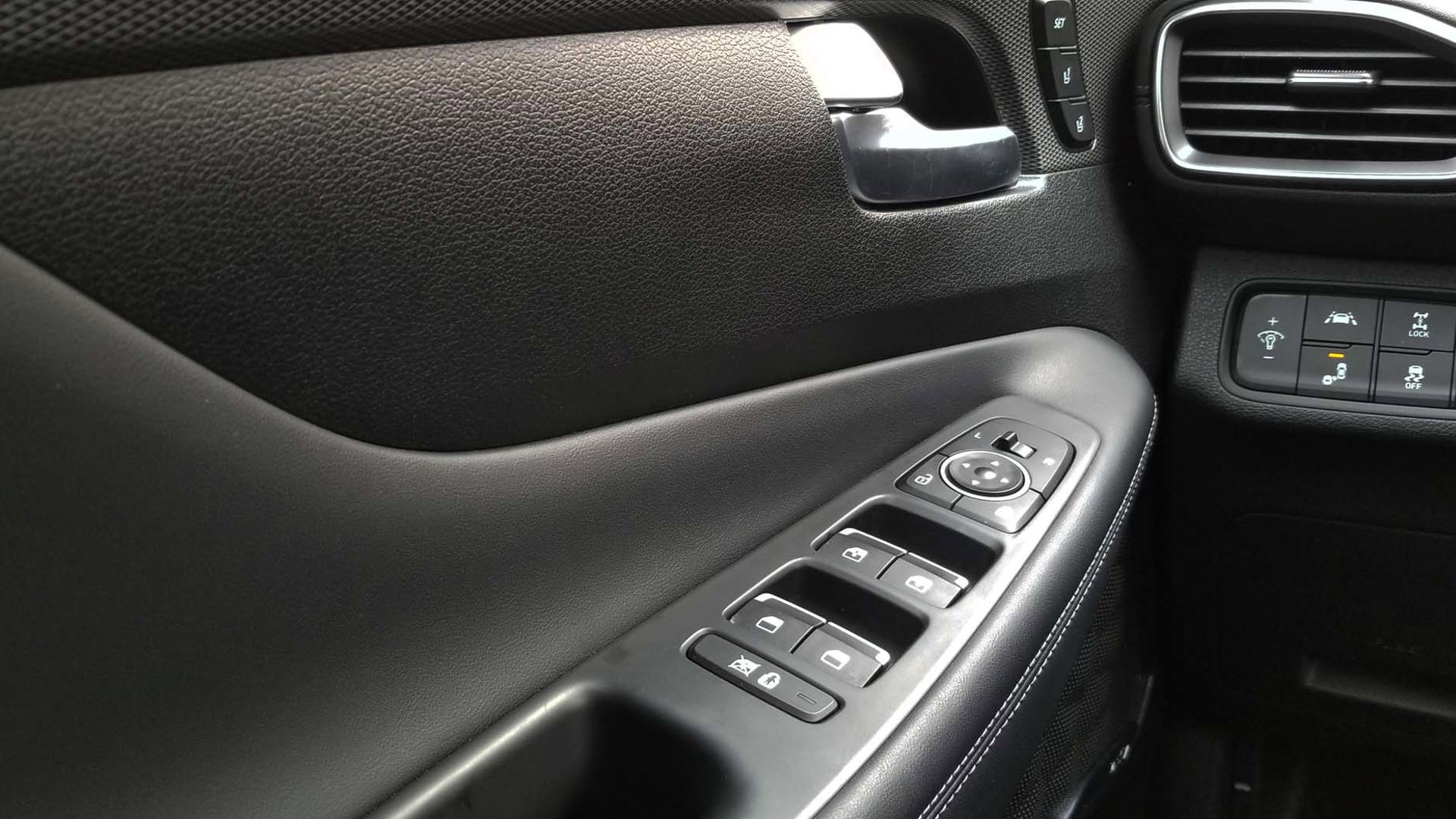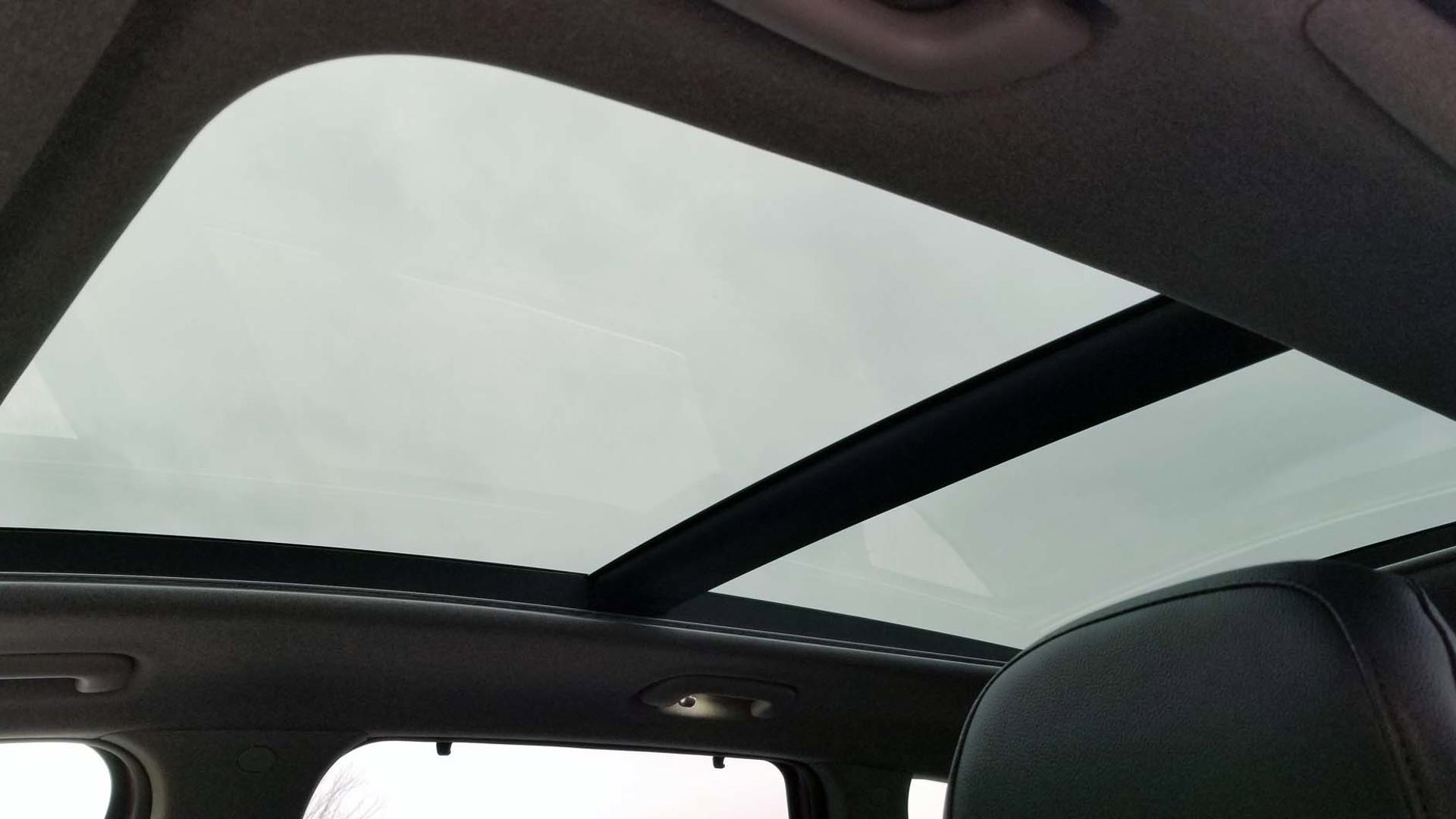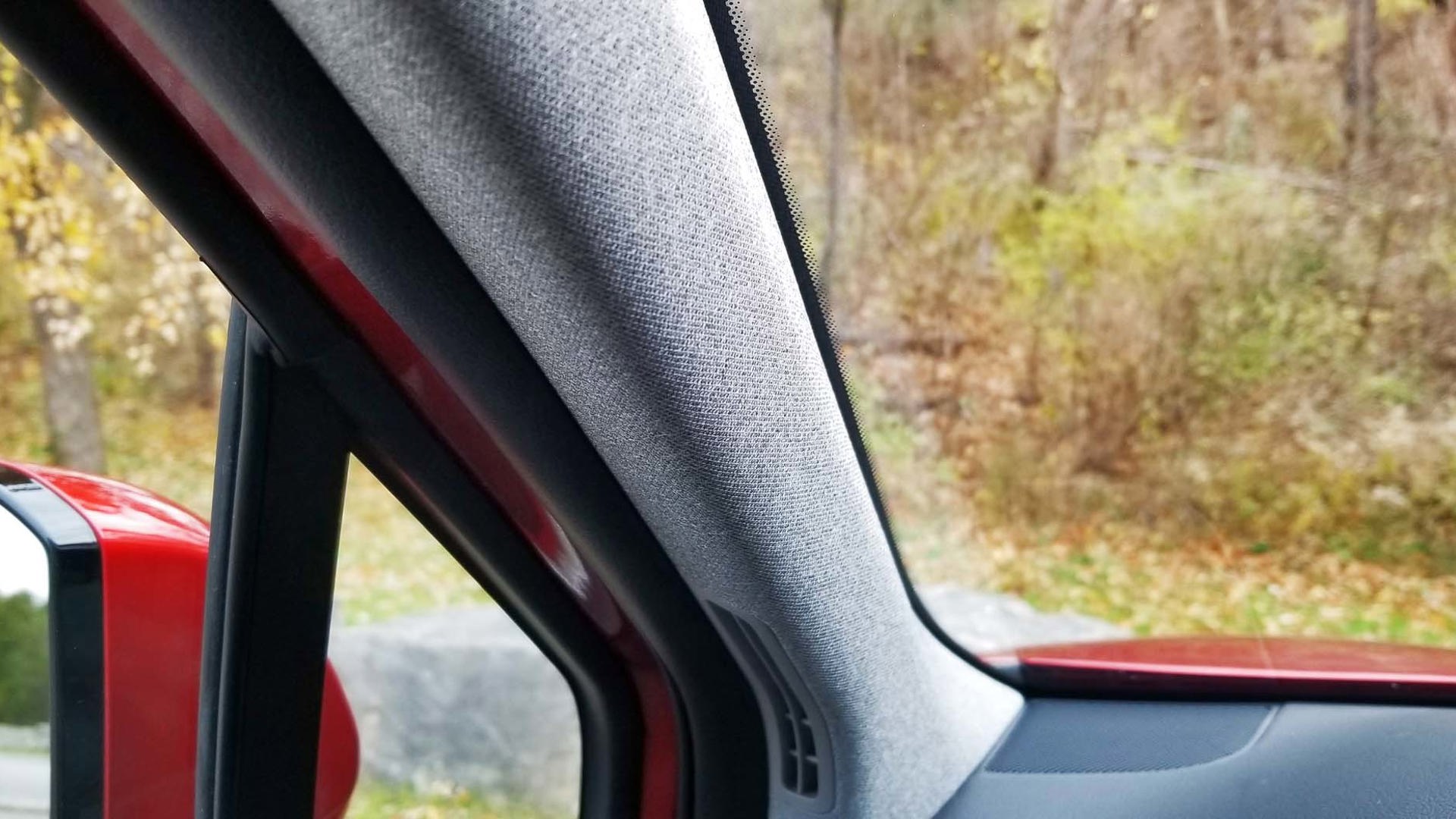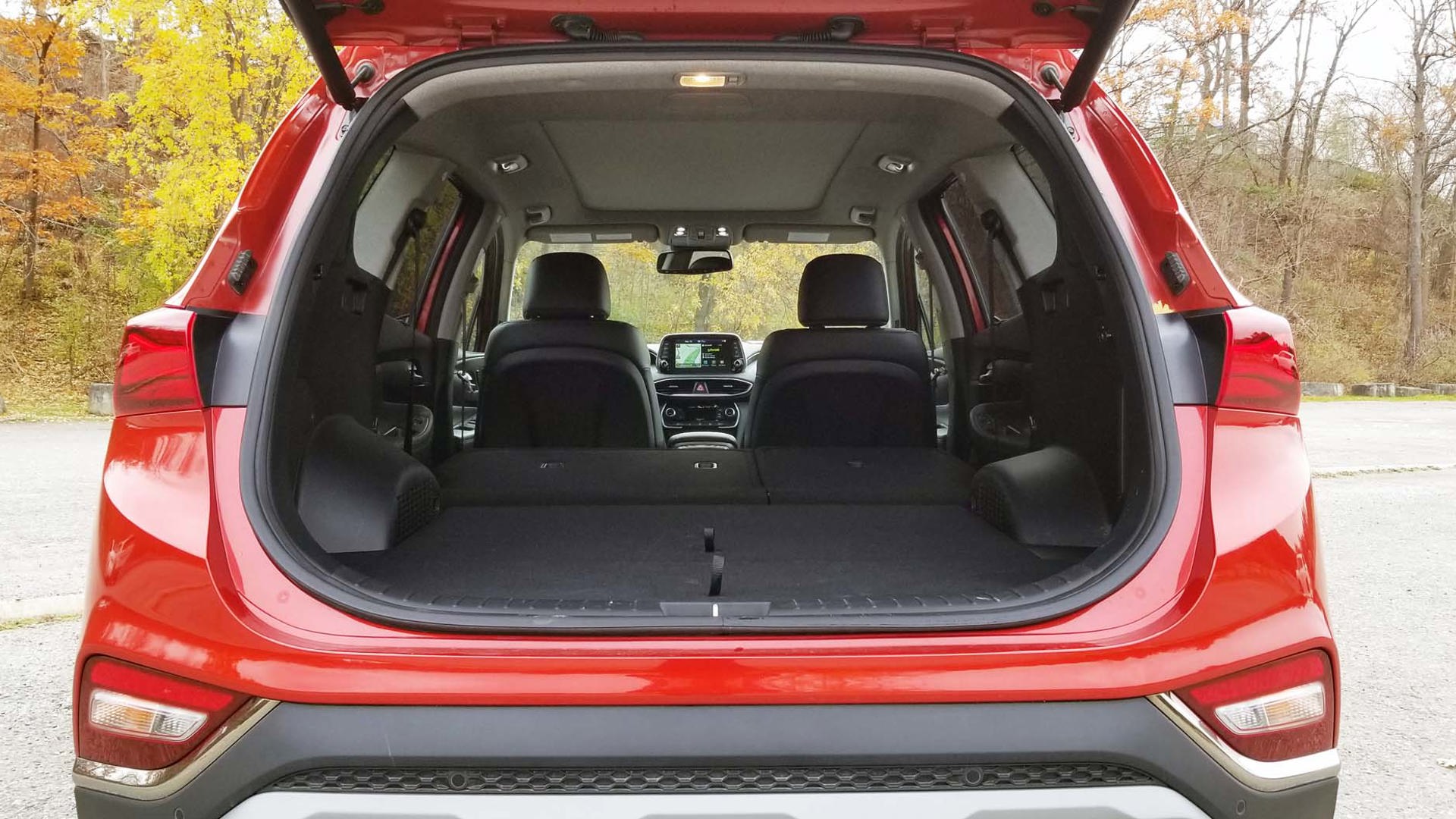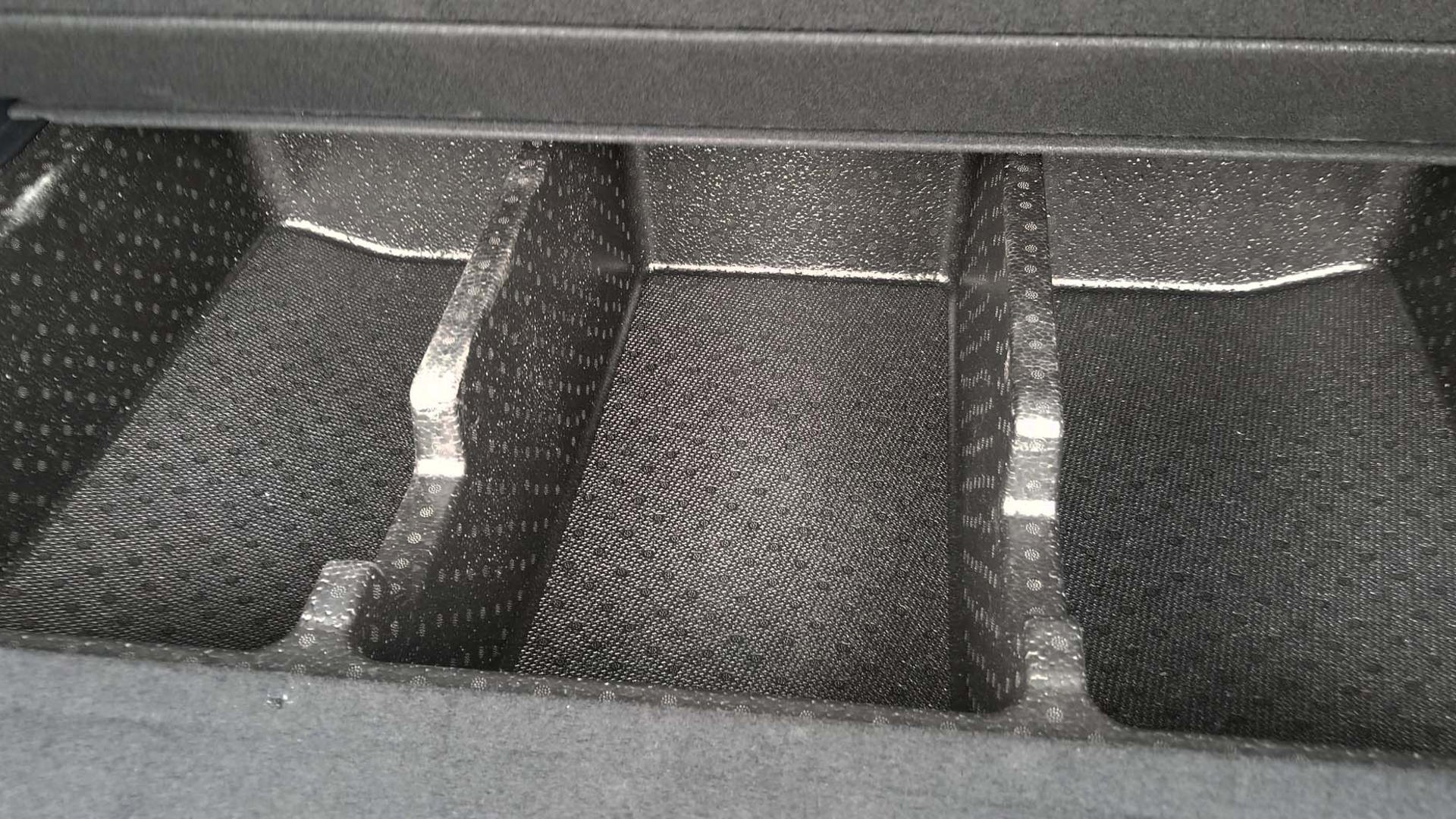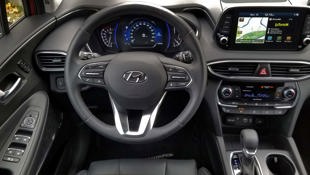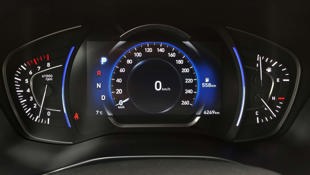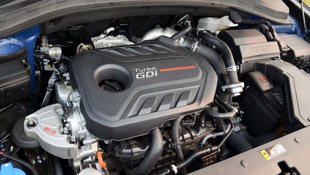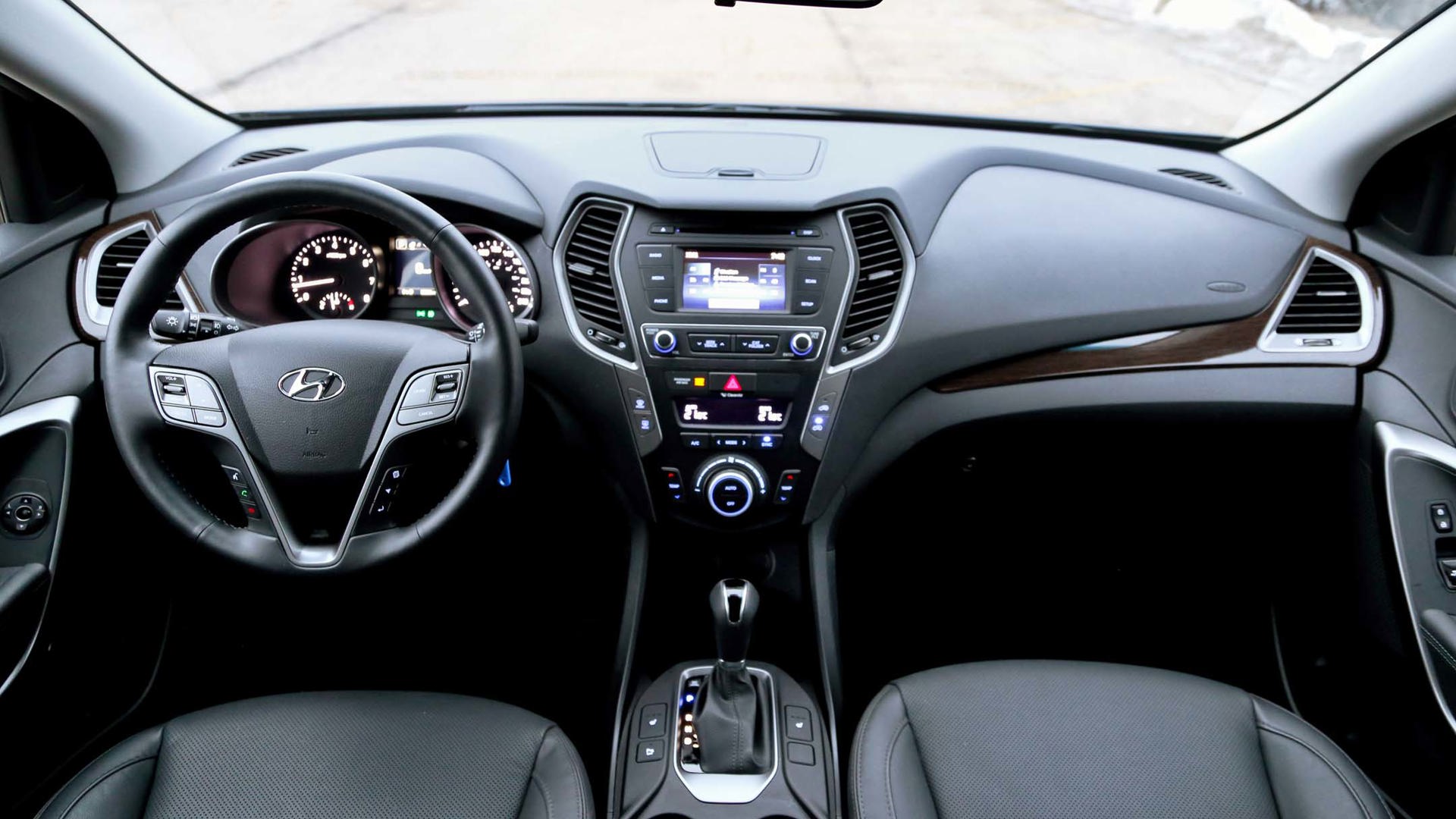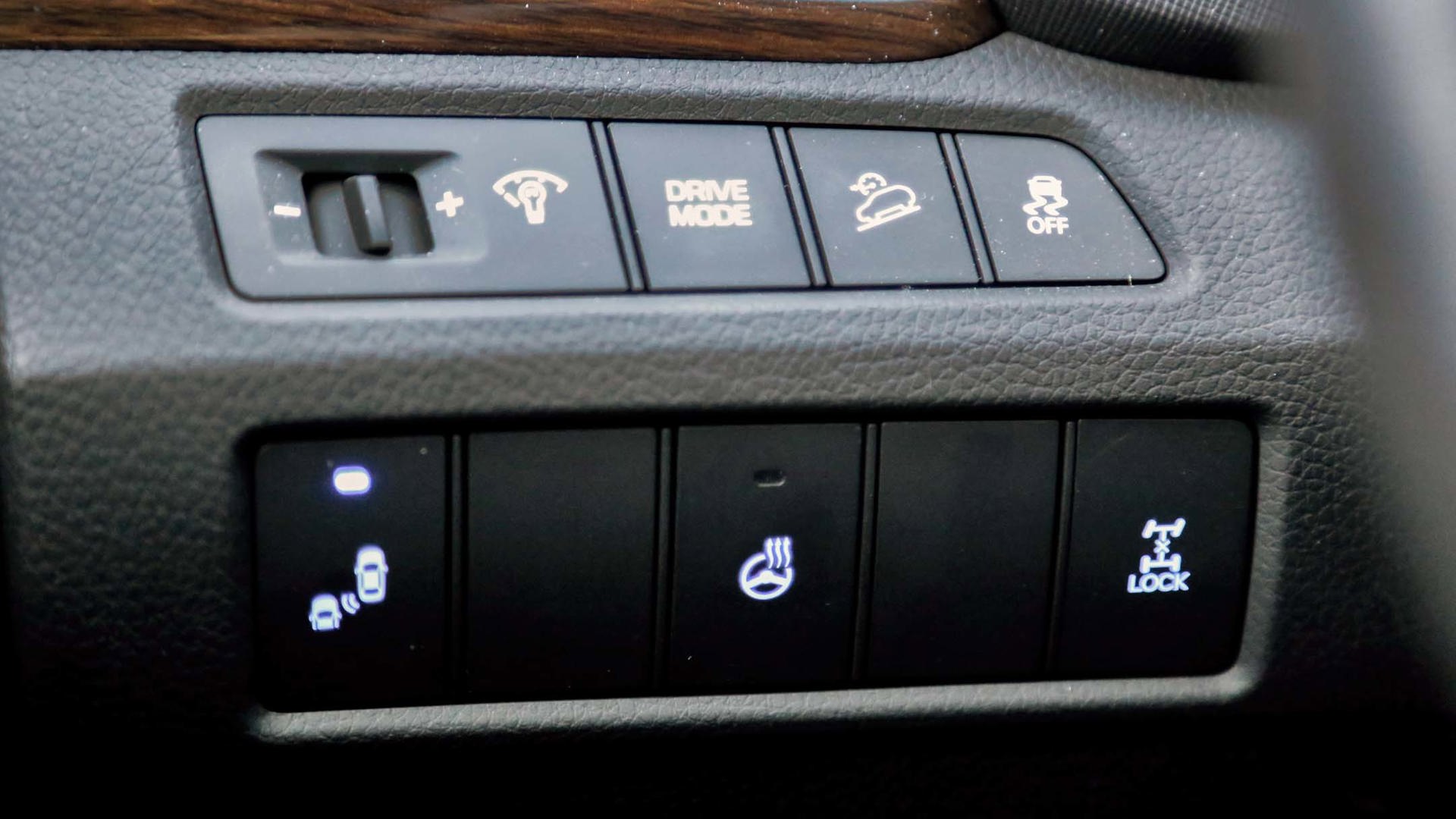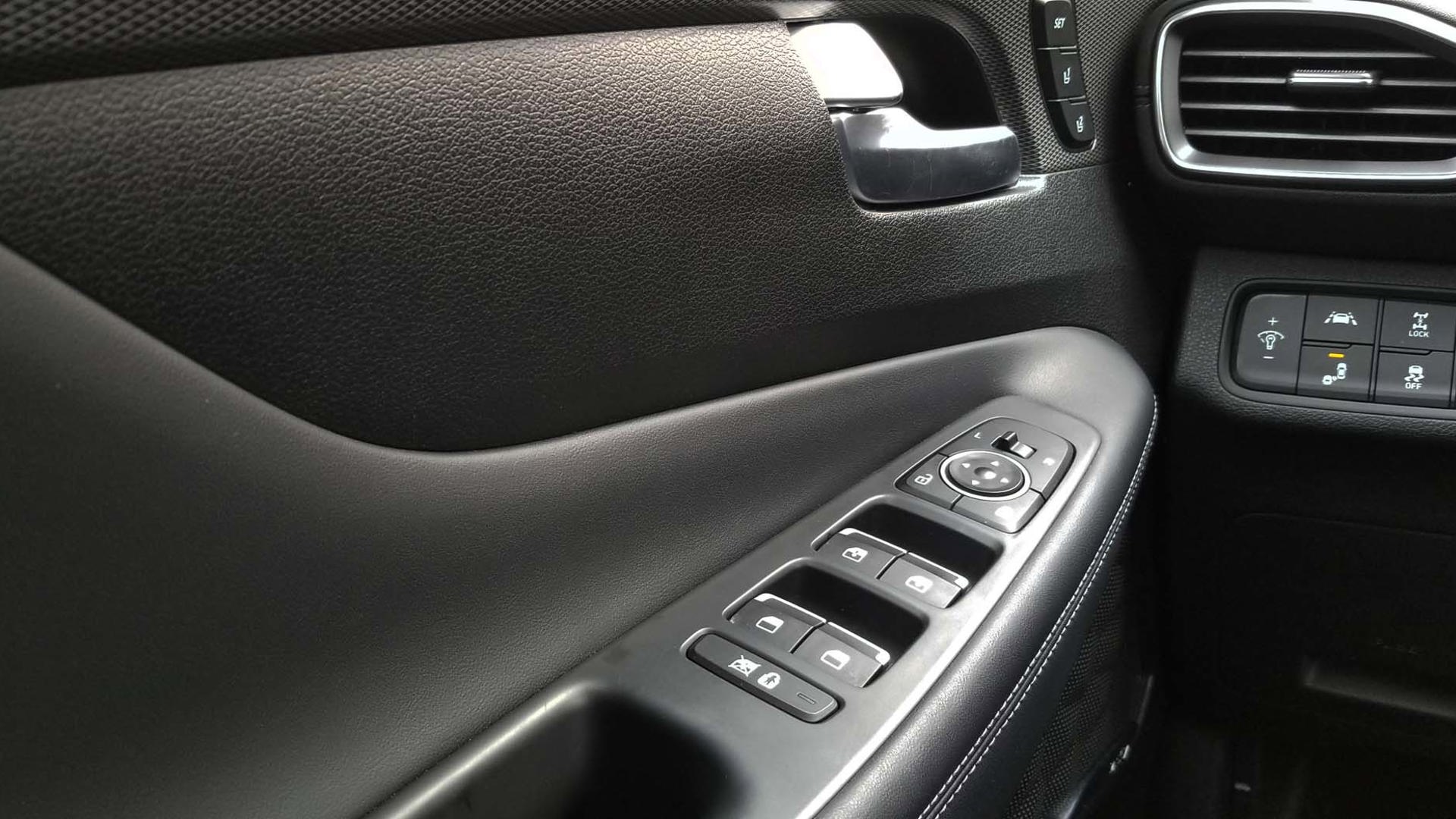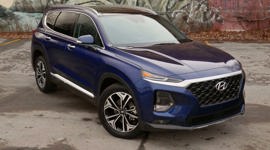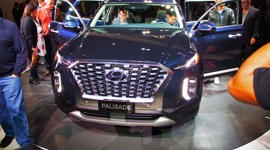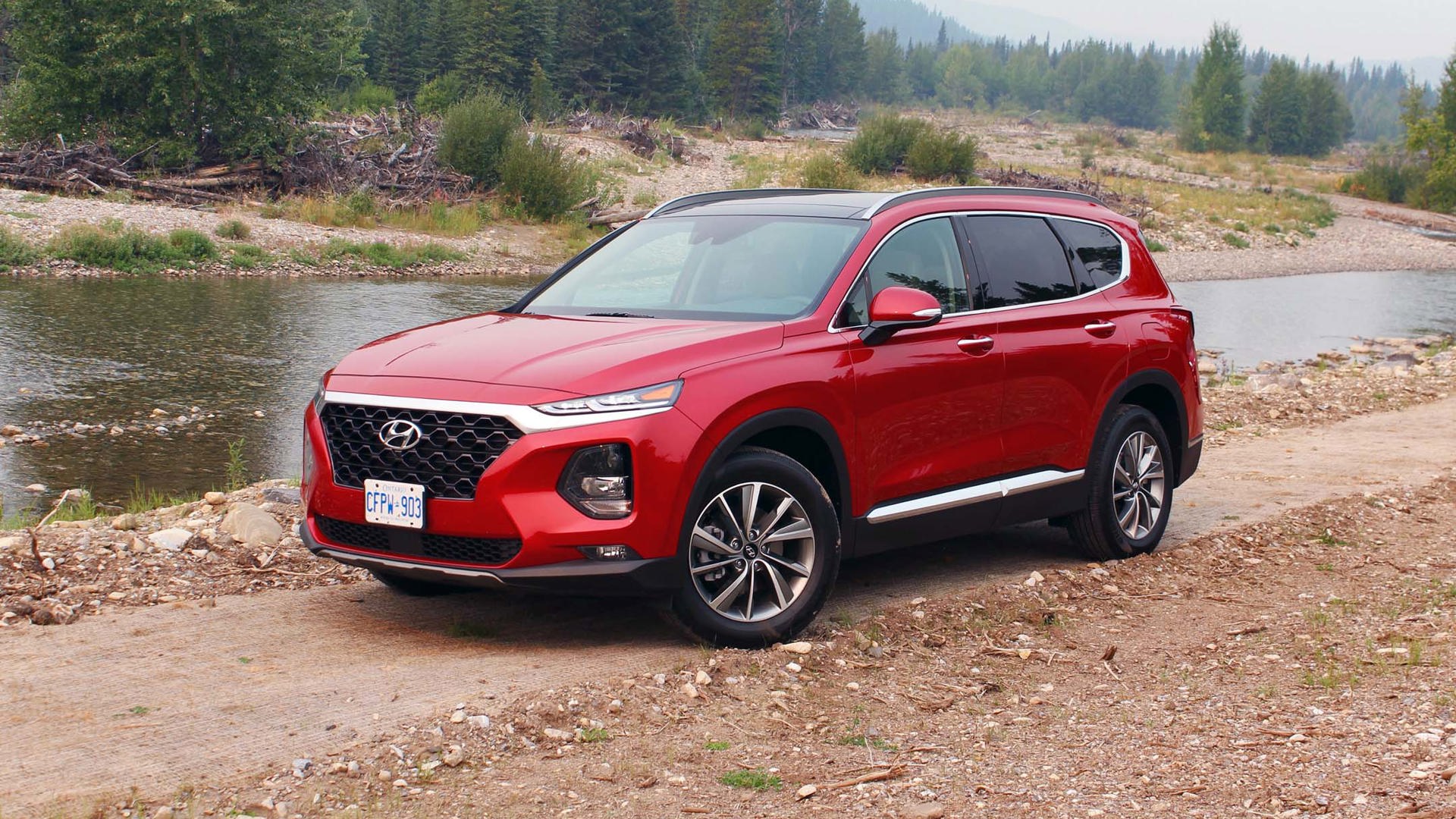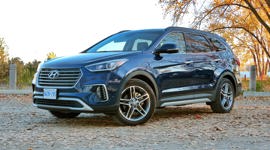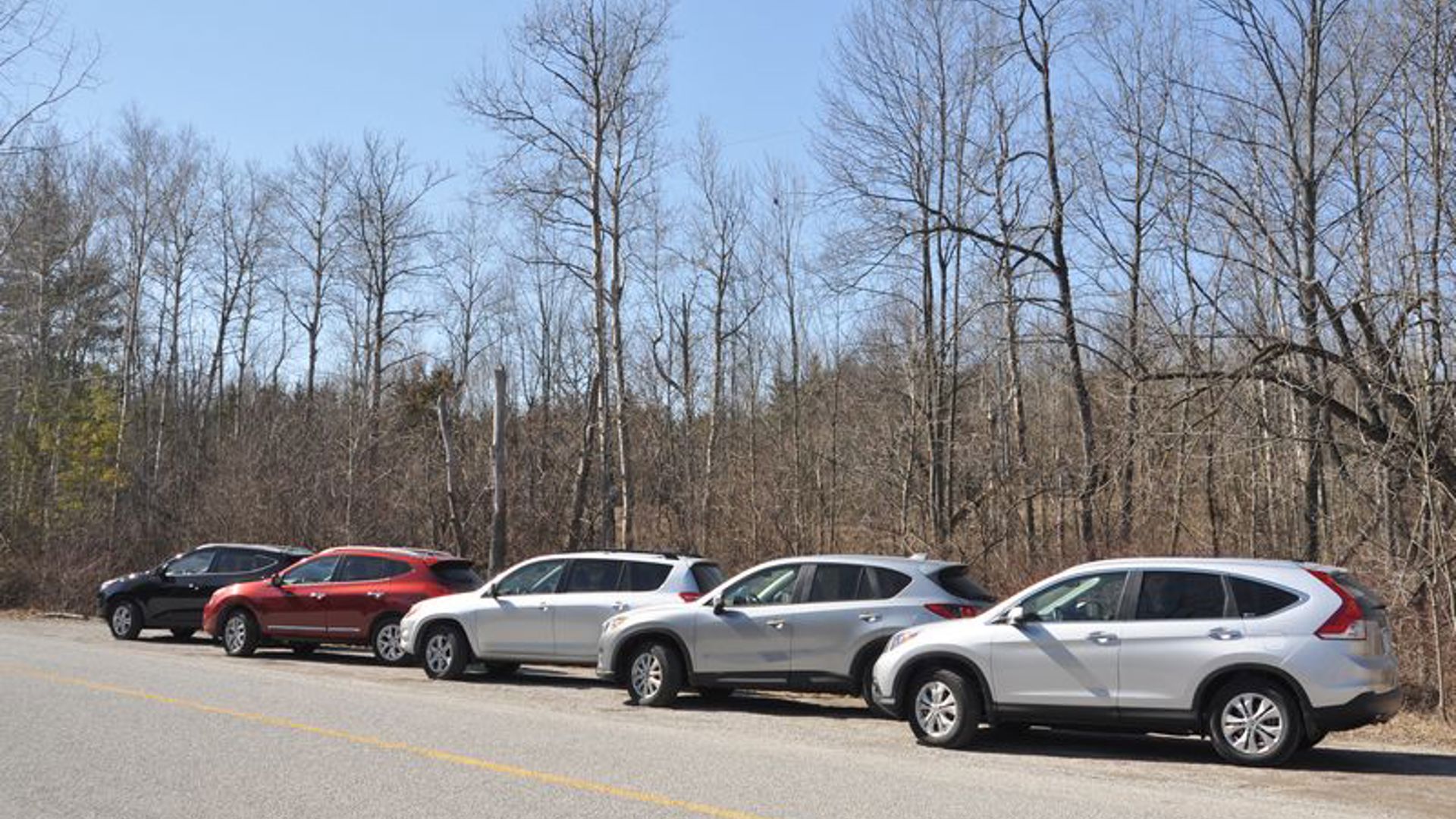Comparison Data
|
2018 Hyundai Santa Fe Sport 2.4 Base FWD
|
2019 Hyundai Santa Fe Essential FWD
|
2018 Hyundai Santa Fe Sport 2.0T SE AWD
|
2019 Hyundai Santa Fe Preferred 2.0 AWD
|
|---|---|---|---|
|
Engine Displacement
2.4L
|
2.4L
|
2.0L
|
2.0L
|
|
Engine Cylinders
I4
|
I4
|
I4
|
I4
|
|
Peak Horsepower
185 hp @ 6,000 rpm
|
185 hp @ 6,000 rpm
|
240 hp @ 6,000 rpm
|
235 hp @ 6,000 rpm
|
|
Peak Torque
178 lb-ft @ 4,000 rpm
|
178 lb-ft @ 4,000 rpm
|
260 lb-ft @ 1,450 rpm
|
260 lb-ft @ 1,450 rpm
|
|
Fuel Economy
11.1/8.6/10.0 L/100 km cty/hwy/cmb
|
10.7/8.2/9.6 L/100 km cty/hwy/cmb
|
12.5/9.6/11.2 L/100 km cty/hwy/cmb
|
12.3/9.8/11.2 L/100 km cty/hwy/cmb
|
|
Cargo Space
1,003 / 2,025 L seats down
|
1,017 / 2,019 L seats down
|
1,003 / 2,025 L seats down
|
1,017 / 2,019 L seats down
|
|
Base Price
$28,599
|
$28,999
|
$37,299
|
$37,099
|
|
A/C Tax
$100
|
$100
|
$100
|
$100
|
|
Destination Fee
$1,905
|
$1,905
|
$1,905
|
$1,905
|
|
Price as Tested
$30,604
|
$31,004
|
$39,304
|
$39,104
|
|
Optional Equipment
|
What’s in a name?
The 2019 Santa Fe is on sale now, so supply of the 2018 Santa Fe Sport will start to run thin any time now.
When it comes to the Hyundai Santa Fe, the answer is: an awful lot these days.
For some time now up until last year, there was technically no such thing as a Hyundai Santa Fe. As of 2018, there was either a Santa Fe Sport, which was the short-wheelbase, five-seater version, or the Santa Fe XL, the long-wheelbase seven-seater.
Now, for the 2019 model year, a new generation has launched, and the five-seat model is known simply as the Hyundai Santa Fe. But the previous-generation 2018 Santa Fe XL is still on sale alongside it – at least, we think, until the promised diesel-only seven-seat version of the newer Santa Fe is released sometime this year (and it’s said to be a Santa Fe too, which means the XL moniker will be dropped).
And another new, larger eight-seater was announced at the Los Angeles Auto Show, but it’s not a Santa Fe at all: it’s the new Hyundai Palisade, which means that the name Santa Fe is no longer synonymous with Hyundai’s largest SUV.
Confused yet? Bear with them. This will all shake out and make more sense soon, though it might take another year or two.
Same Engines (Plus One), New Transmission
The new Santa Fe remains on the same platform as the Kia Sorento and carries the same two Theta II gasoline engines into its fourth generation: the base 2.4-litre naturally aspirated four-cylinder engine, which produces the same 185 hp and 178 lb-ft of torque, and the 2.0-litre turbocharged four-cylinder available from the Preferred Turbo grade up, which actually goes down five horsepower to 235 while keeping the same torque output of 260 lb-ft.
There is meant to be a diesel engine on its way, which will be a new 2.2-litre block that makes 197 hp and 322 lb-ft of torque. However, this will not be available on the five-seater Santa Fe at all; it’s to be the exclusive engine for a seven-seat variant, to formally debut sometime in 2019.
The transmission with the gas engines goes from a six-speed automatic to an eight-speed automatic across the board, and all-wheel drive is optional with the base trim and standard from the second-level trim up, a simplification over the 2018 offerings.
On that same vein, the overall grade structure is pared down for 2019. The 2018 Santa Fe had four grade levels with the 2.4-litre engine and two with the 2.0-litre turbo. The 2019 pares this down to Essential and Preferred, equipped with the 2.4-litre as the two entry-level grades, and Preferred Turbo, Luxury, and Ultimate, all of which come only with the turbo mill.
Roomier, and Definitely Different
The biggest changes with the new Santa Fe, then, are undoubtedly in its appearance.
In 2018, the Santa Fe Sport had rounded corners, particularly on the front end, an inoffensive if unremarkable grille shape, headlights that could almost be perceived as oversized, and a decided lift to the window line toward a pointed and shapely conclusion at the rear.
The 2019, on the other hand, follows on Hyundai’s current design strategy to make it look like a supersized version of the subcompact Hyundai Kona (though, mercifully, it skips the faux elongated hood intake). It carries over the same inverted curvy trapezoid grille, strongly elongated headlights, and enormous fog lights that almost seem to give it cheekbones. This styling is aptly described as polarizing. I warmed to it over time in the Kona, but I’m not an enormous fan of it in this larger iteration. Plenty of people are, though, and styling is highly subjective.
What I do like is the new side profile, which gives the 2019 Santa Fe a greater sense of presence by being more squared-off and truck-like. The rear windows are also squared-off and are 41 percent larger for improved visibility.
The interior on the 2019 is also a marked improvement. While it carries some similar design elements like sweeping lines, those features are toned down and refined in the new Santa Fe. The vents have also been pulled downward and made significantly more subtle, and the centre console is completely reconfigured with Hyundai’s newer style of touchscreen up top and HVAC and vehicle controls underneath.
In terms of practical upgrades to the amount of interior space, the wheelbase goes up 65 mm to a total length of 2,765 mm, 38 mm of which have gone into increasing the legroom in the second row. The seats there are 18 mm higher, while 22 mm have been added to the headroom. In the back, the cargo space is 33 litres greater in the 2019 for a total of 1,036 litres.
Expanded Suite of Safety Technologies
The other important update in the new Santa Fe versus the 2018 is the vastly improved suite of safety features, which is especially notable because every single one is standard equipment on everything but the base model.
Three of these features are worth calling out. The new rear occupant alert system checks for movement in the rear seats after the driver has left the car and, if detected, will honk the horn, flash the lights, and send a notification to the owner’s Hyundai Blue Link smartphone app. Rear cross-traffic collision-avoidance assist, which warns drivers of approaching traffic and brakes automatically if needed, is equipped here as a Hyundai first. A new safety exit assist feature monitors approaching traffic from behind, including bicycles, and temporarily locks the doors to prevent them from causing a collision.
Other features that are now standard from the Preferred trim: adaptive cruise control, forward collision-avoidance assist with pedestrian detection, lane-keep assist, driver attention warning (which monitors the driver for fatigue or inattention, and issues an alert), blind spot collision-avoidance assist, and high-beam assist.
How Long Will I Have a Choice?
The 2019 Santa Fe is on sale now, so supply of the 2018 Santa Fe Sport will start to run thin any time now. Unless you’re really attached to its less aggressive looks, though, or you score an amazing deal, there’s not much reason to choose it over the new version.
As for the seven-seater, that’s still in the works and an arrival date hasn’t been announced. However, you need to be willing to sign up for a diesel, so a 2018 Santa Fe XL might be a better choice if you’re not interested in waiting for the significantly larger Palisade. There doesn’t seem to be any rush to pick one of those up, though; all signs suggest that it will remain on sale for at least a few more months.
